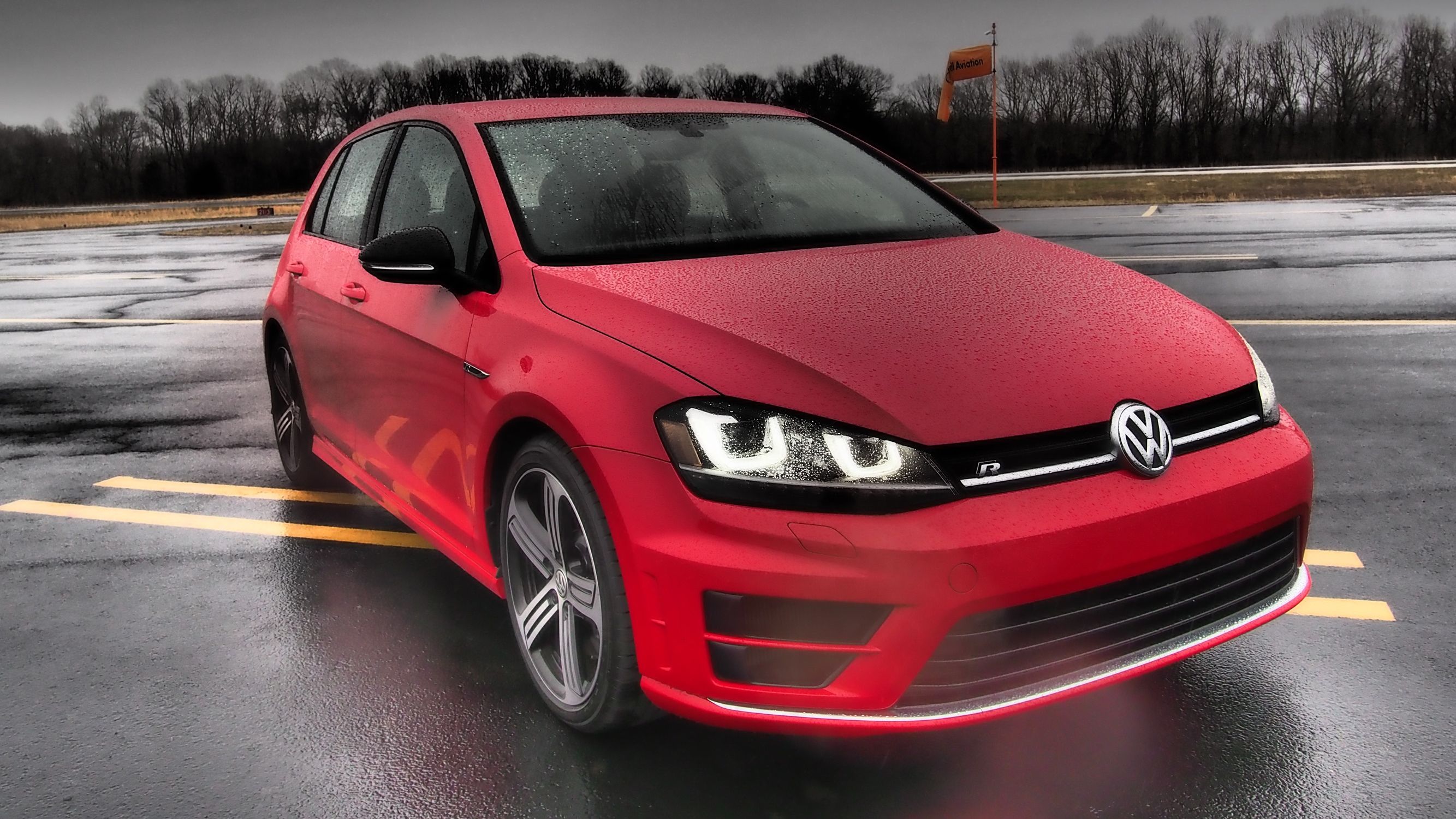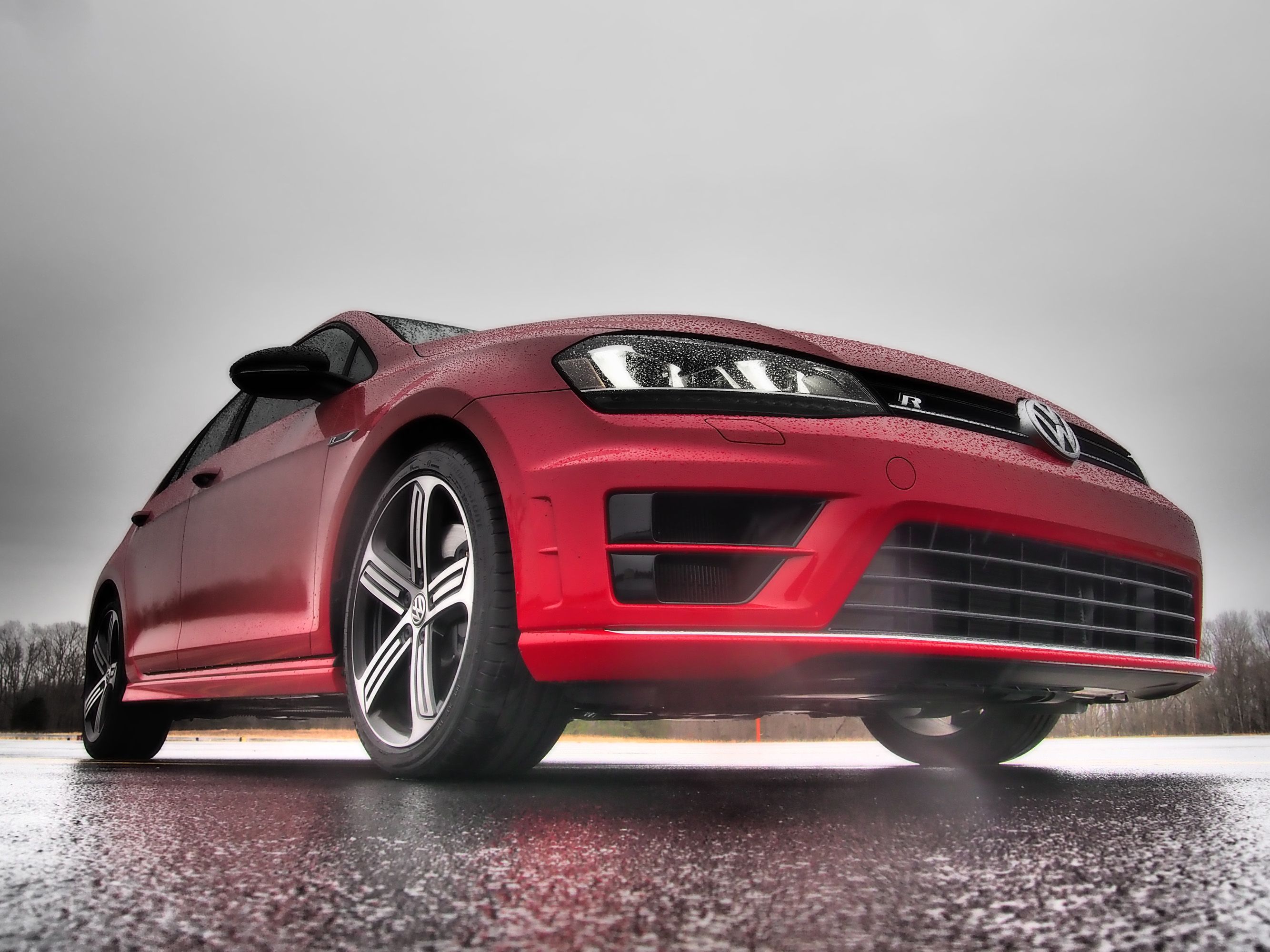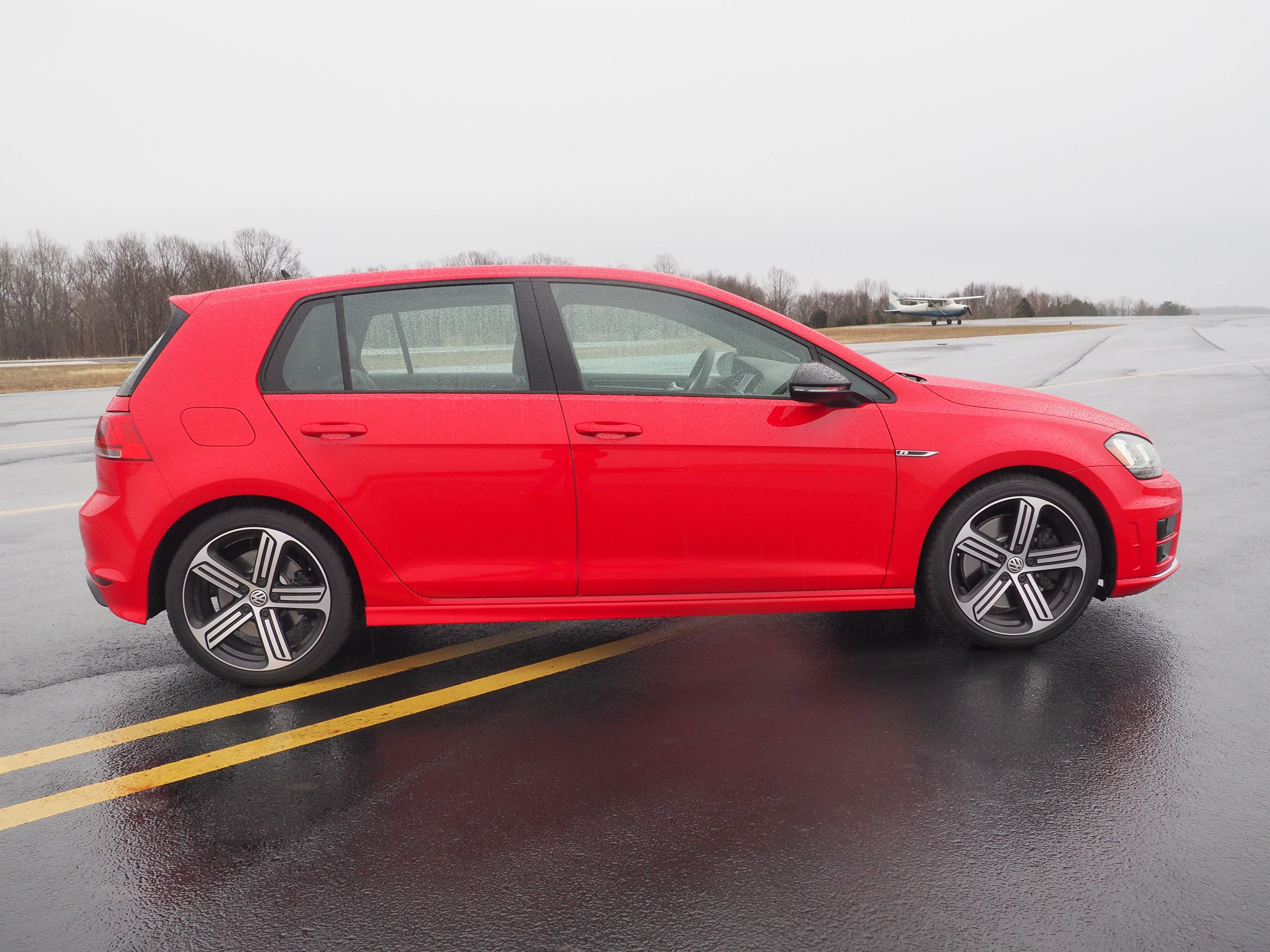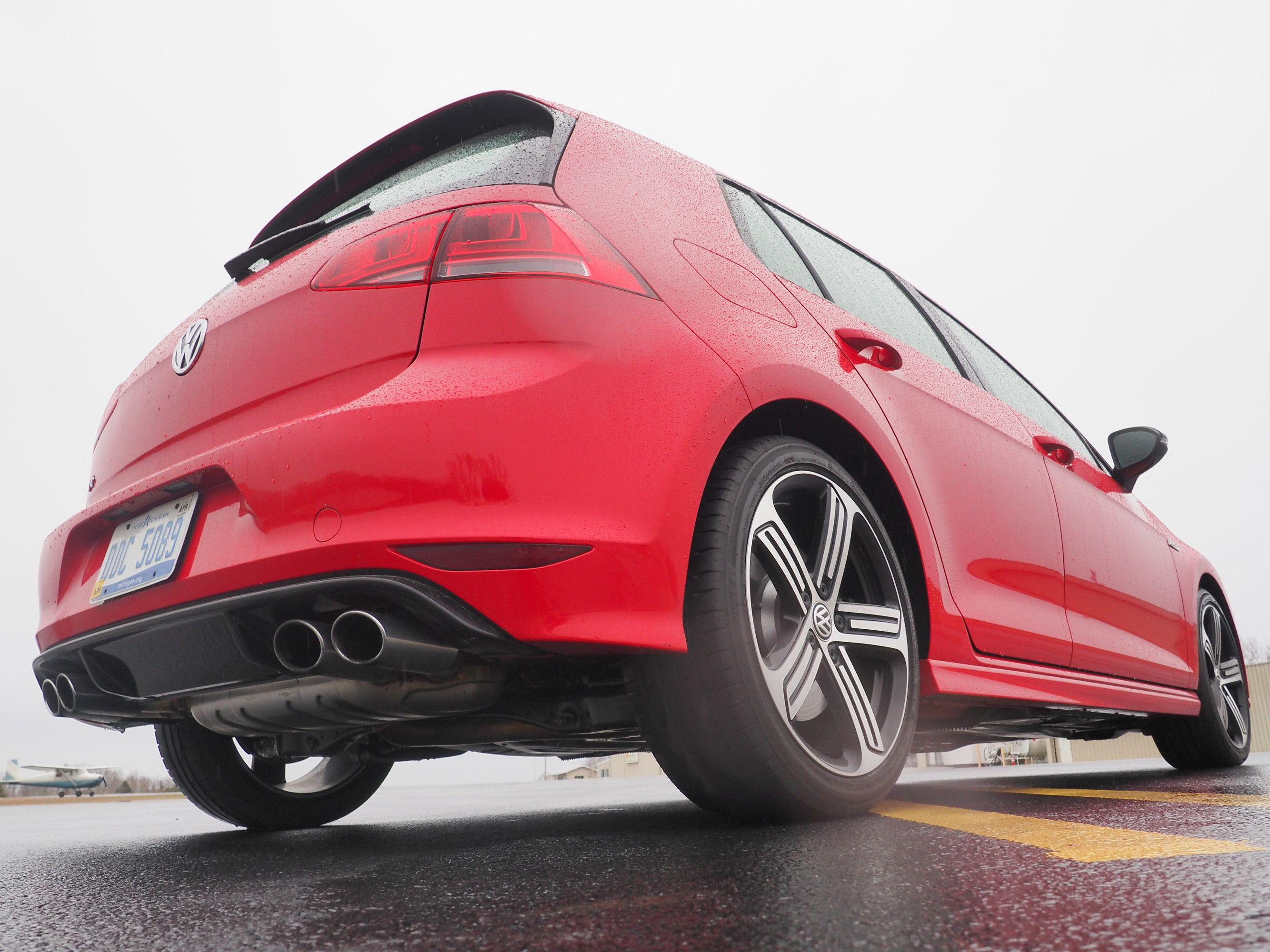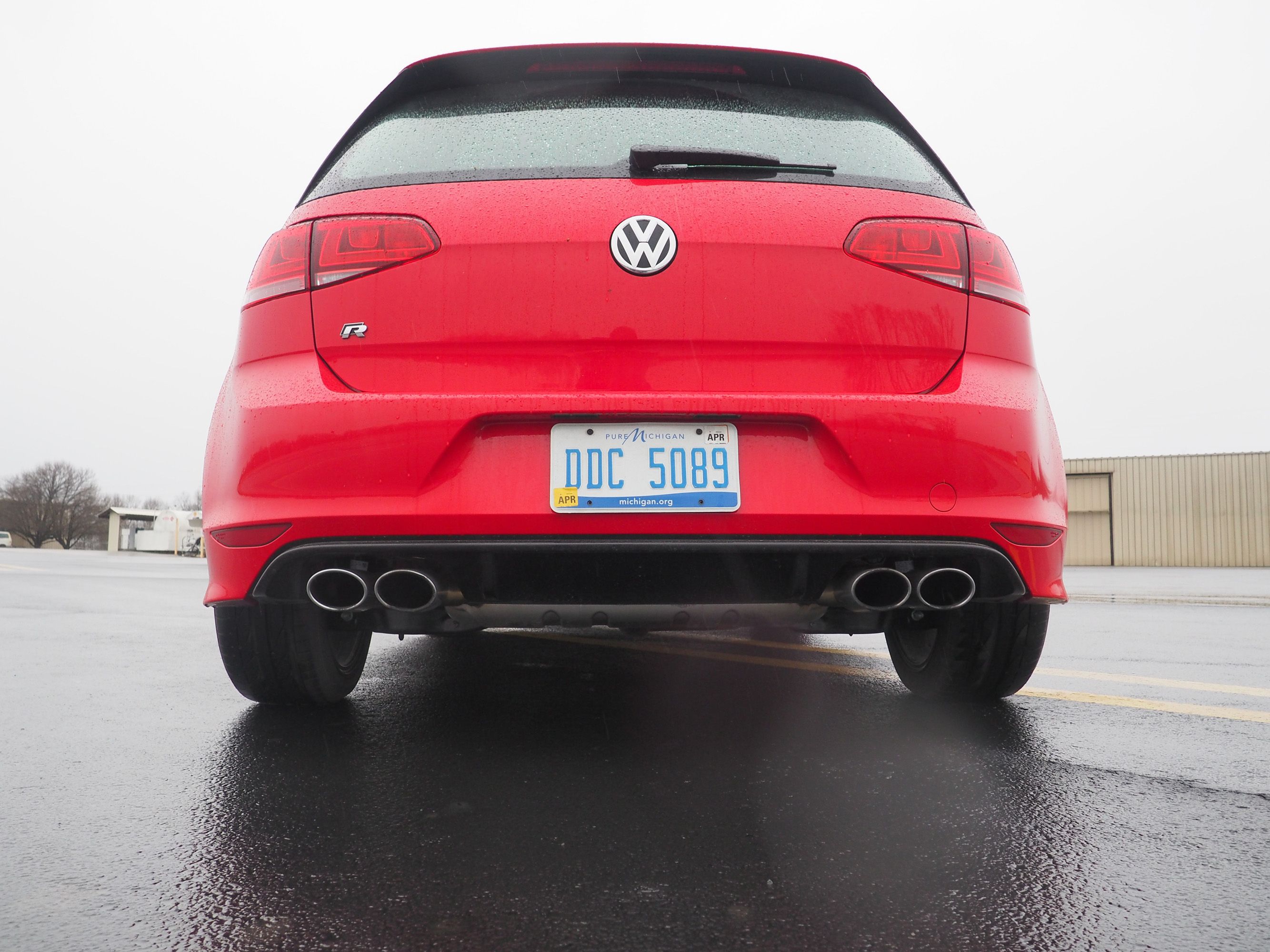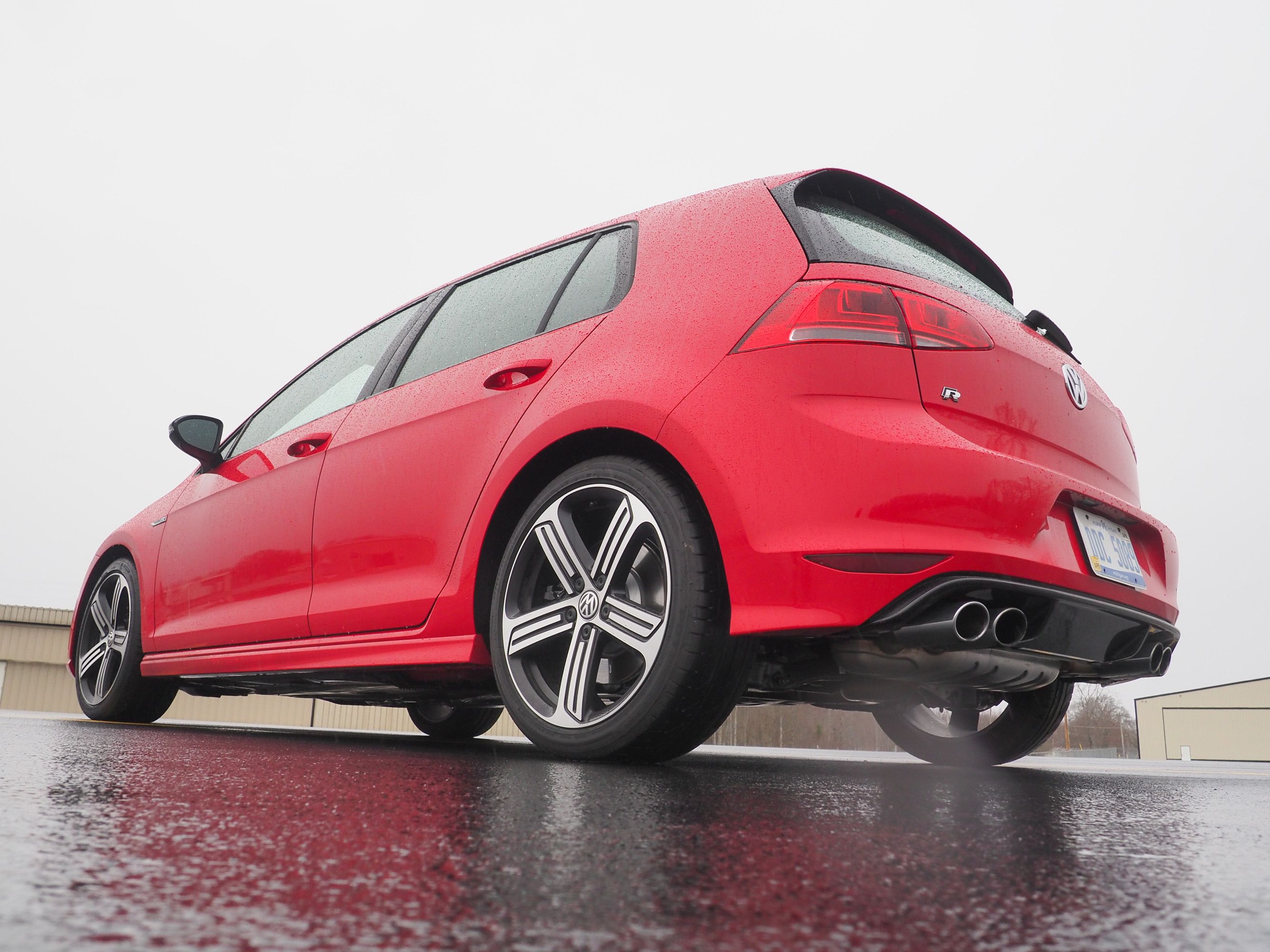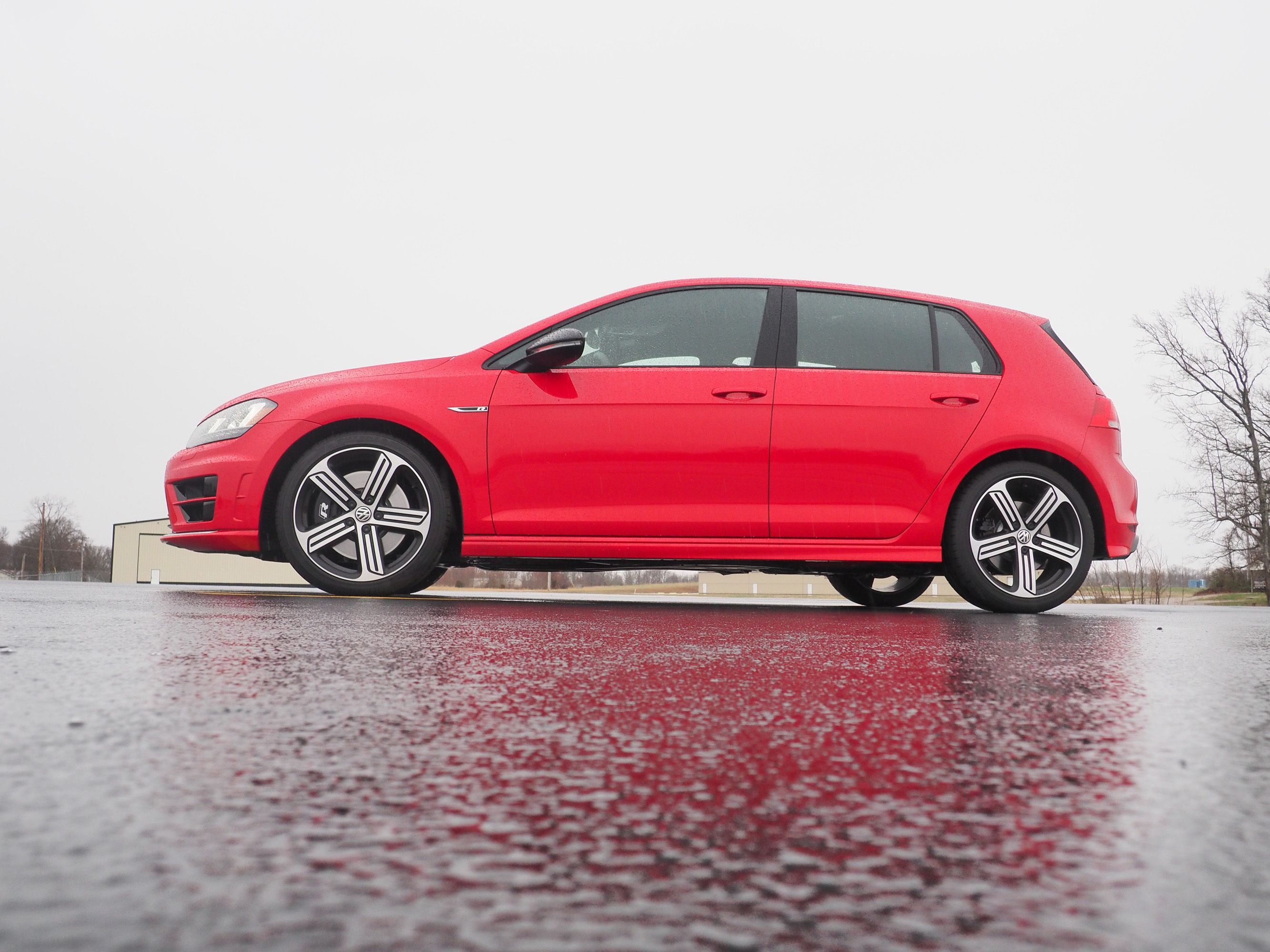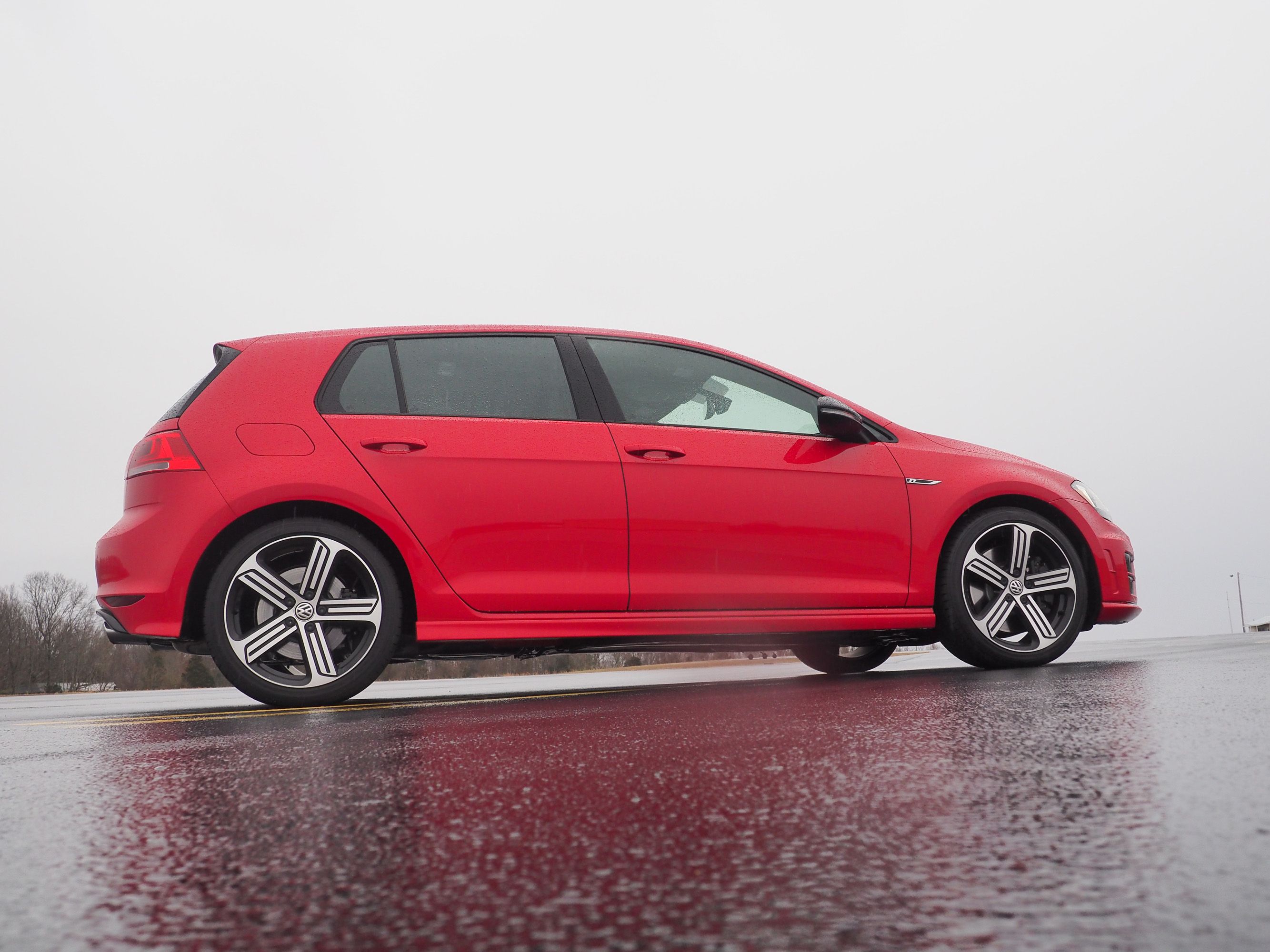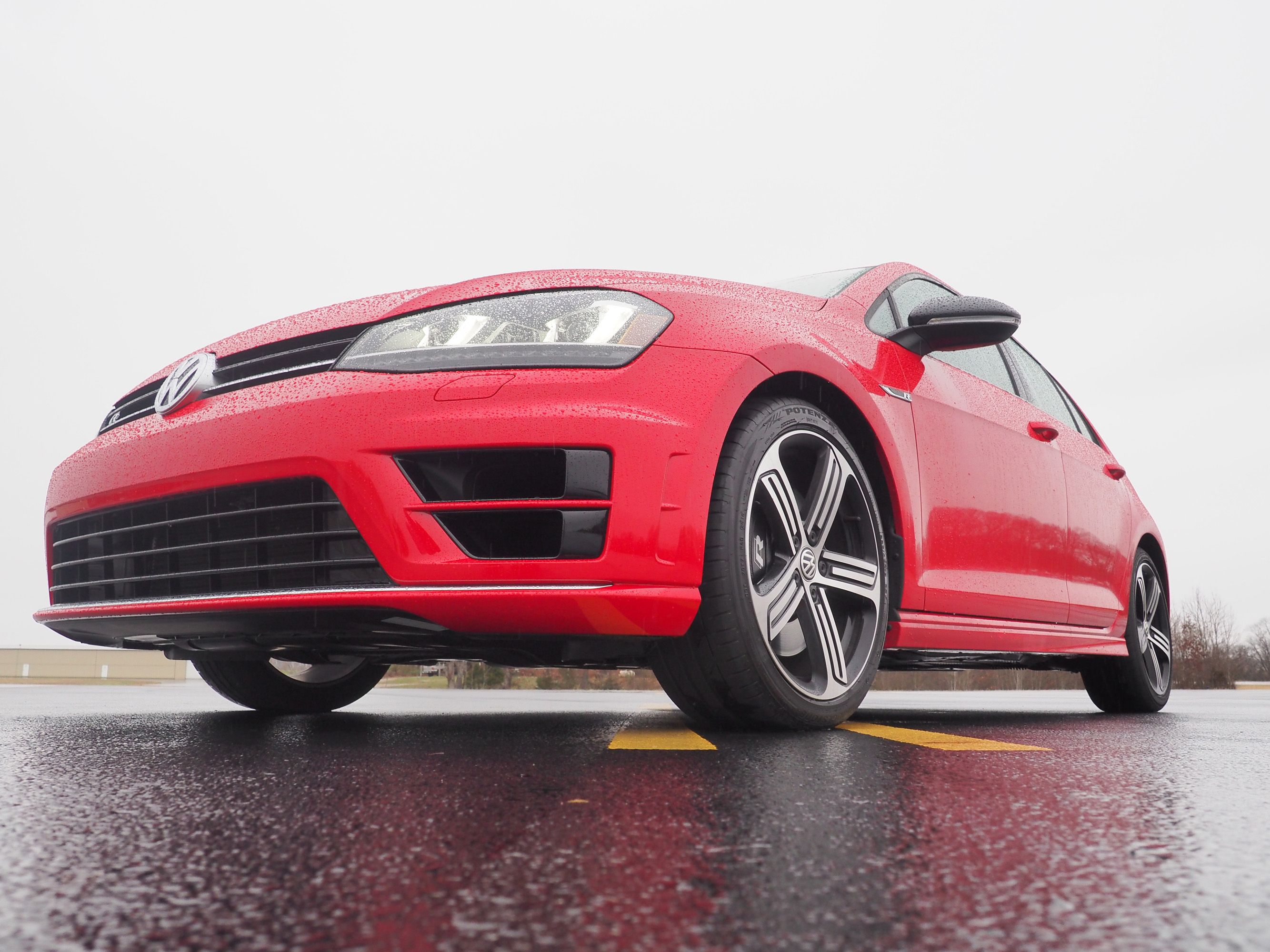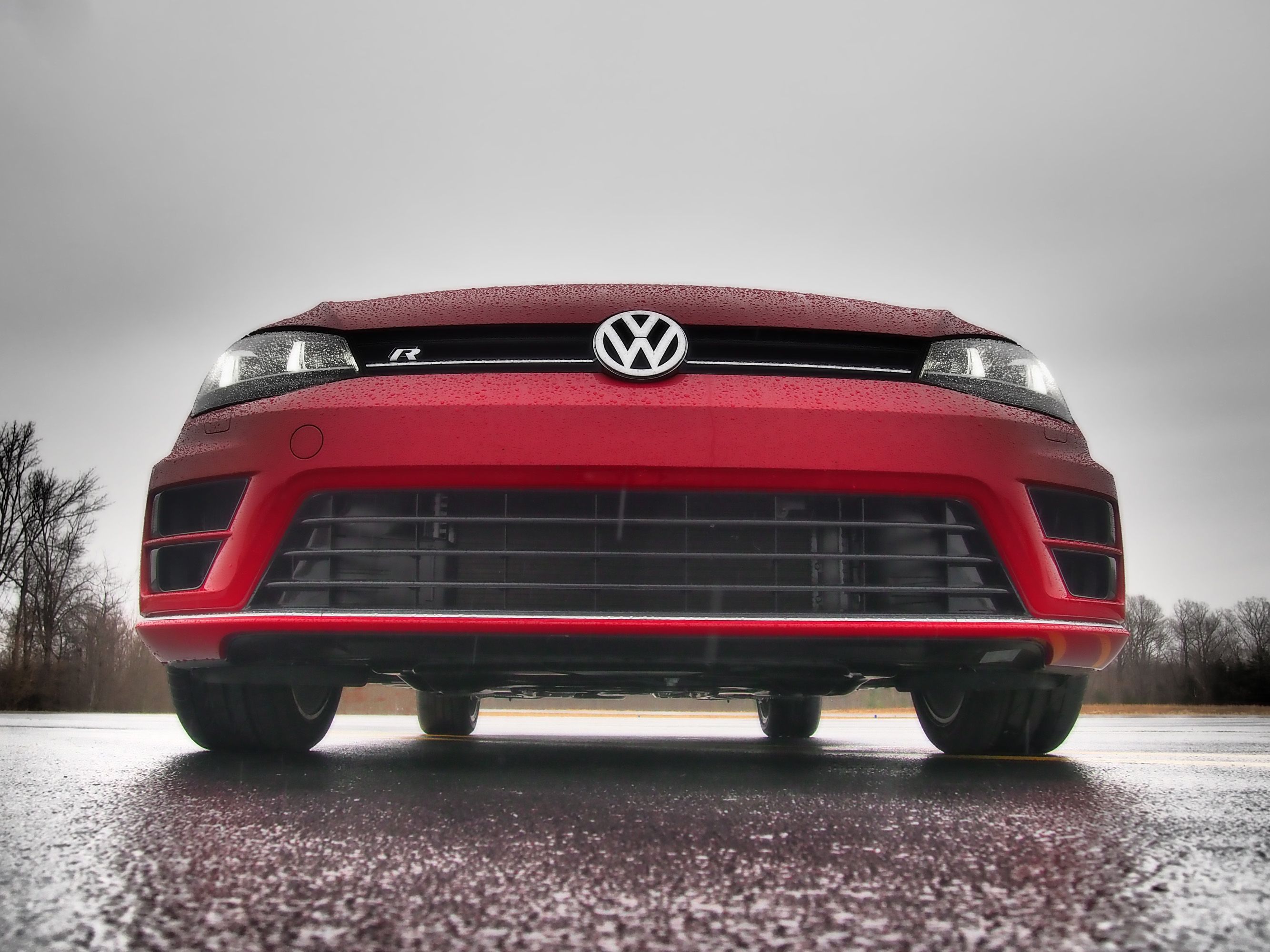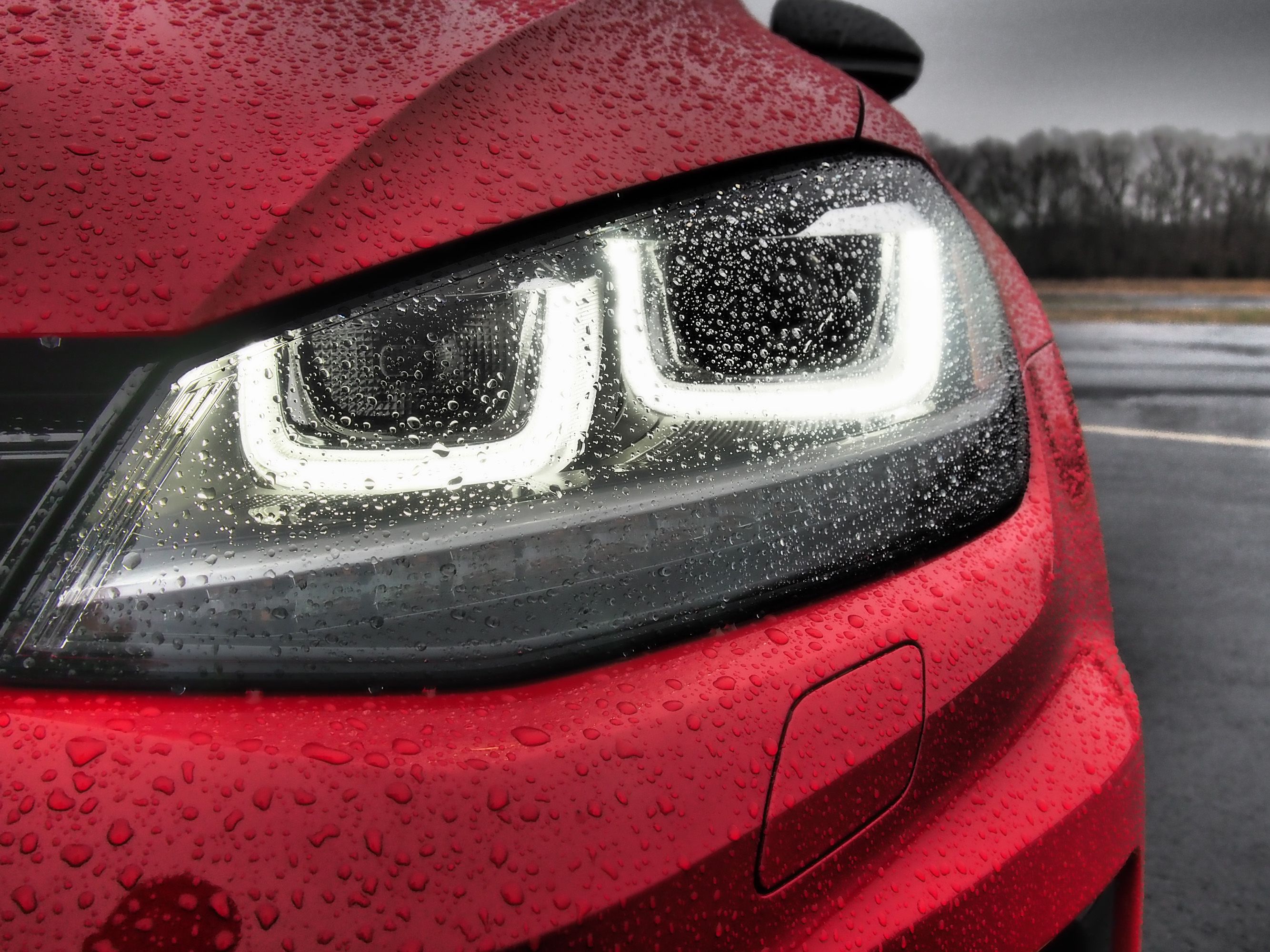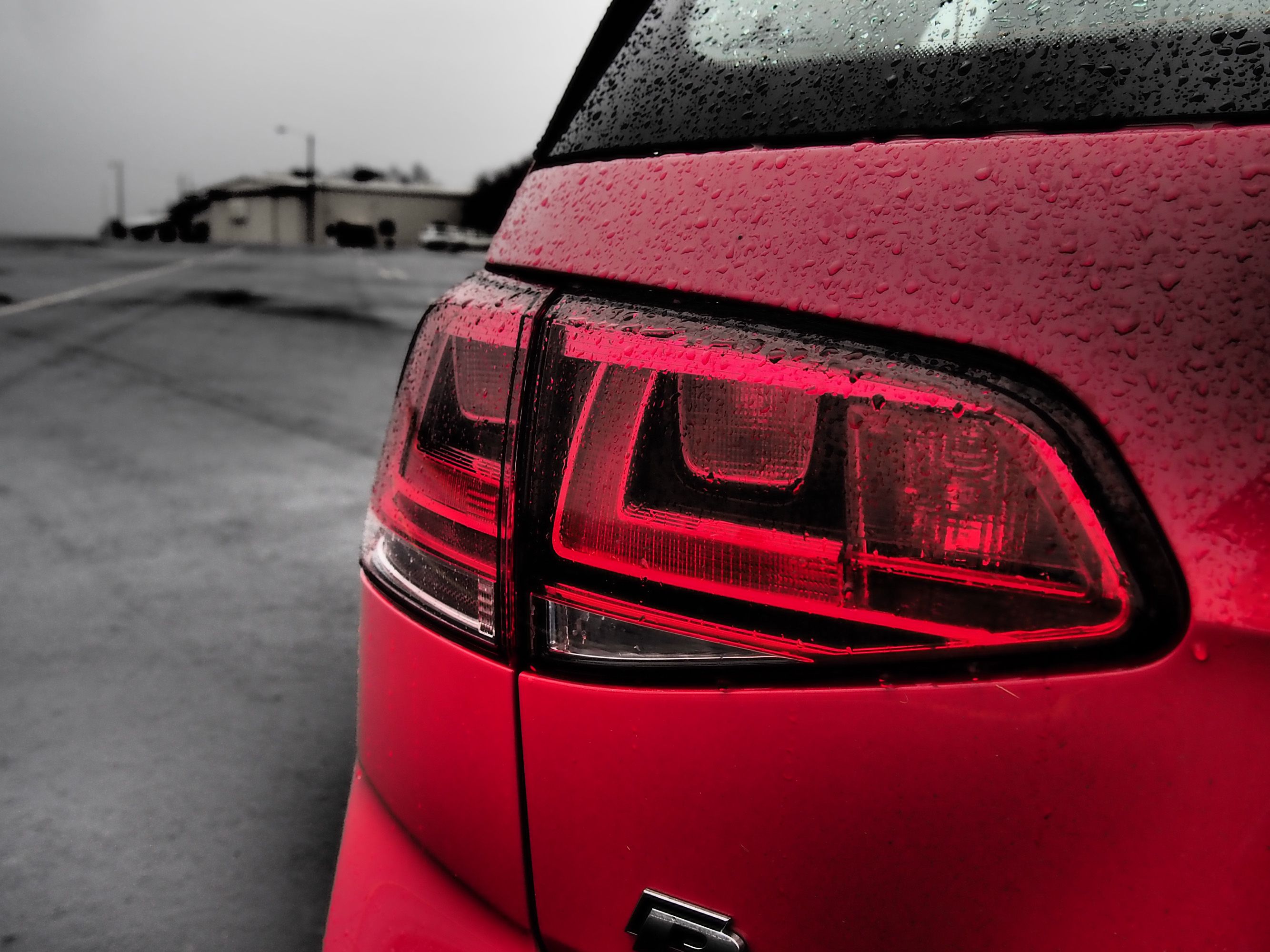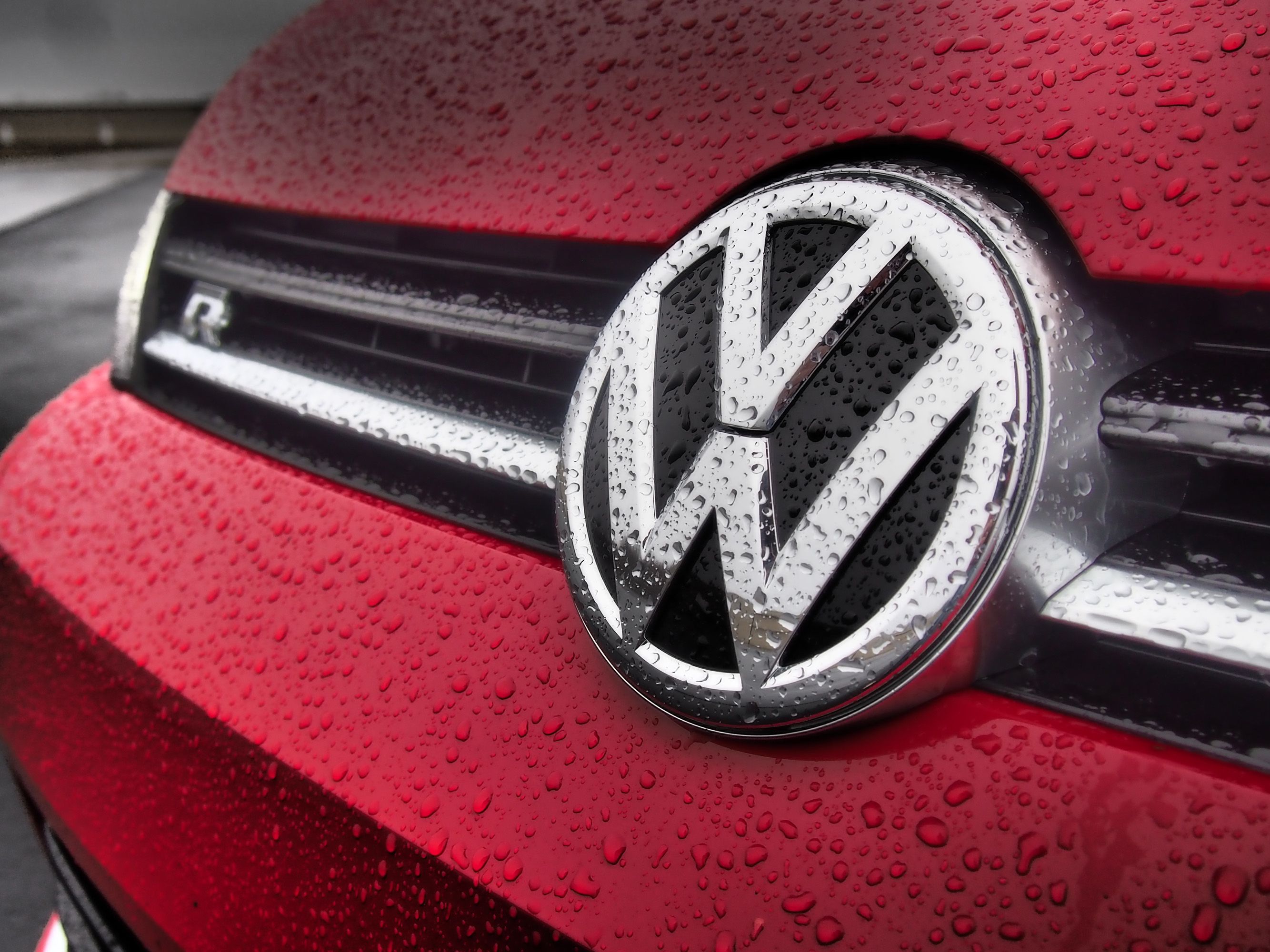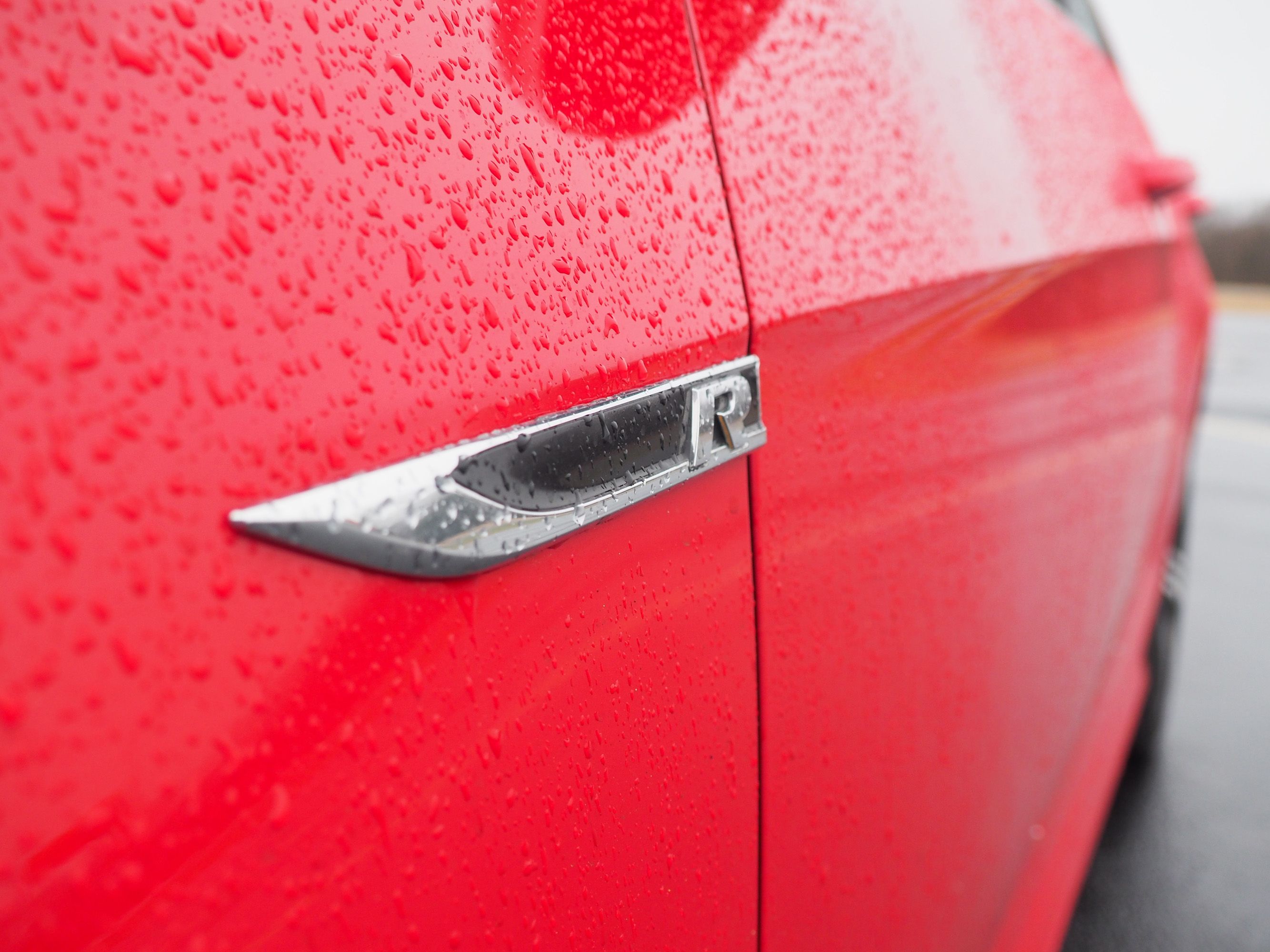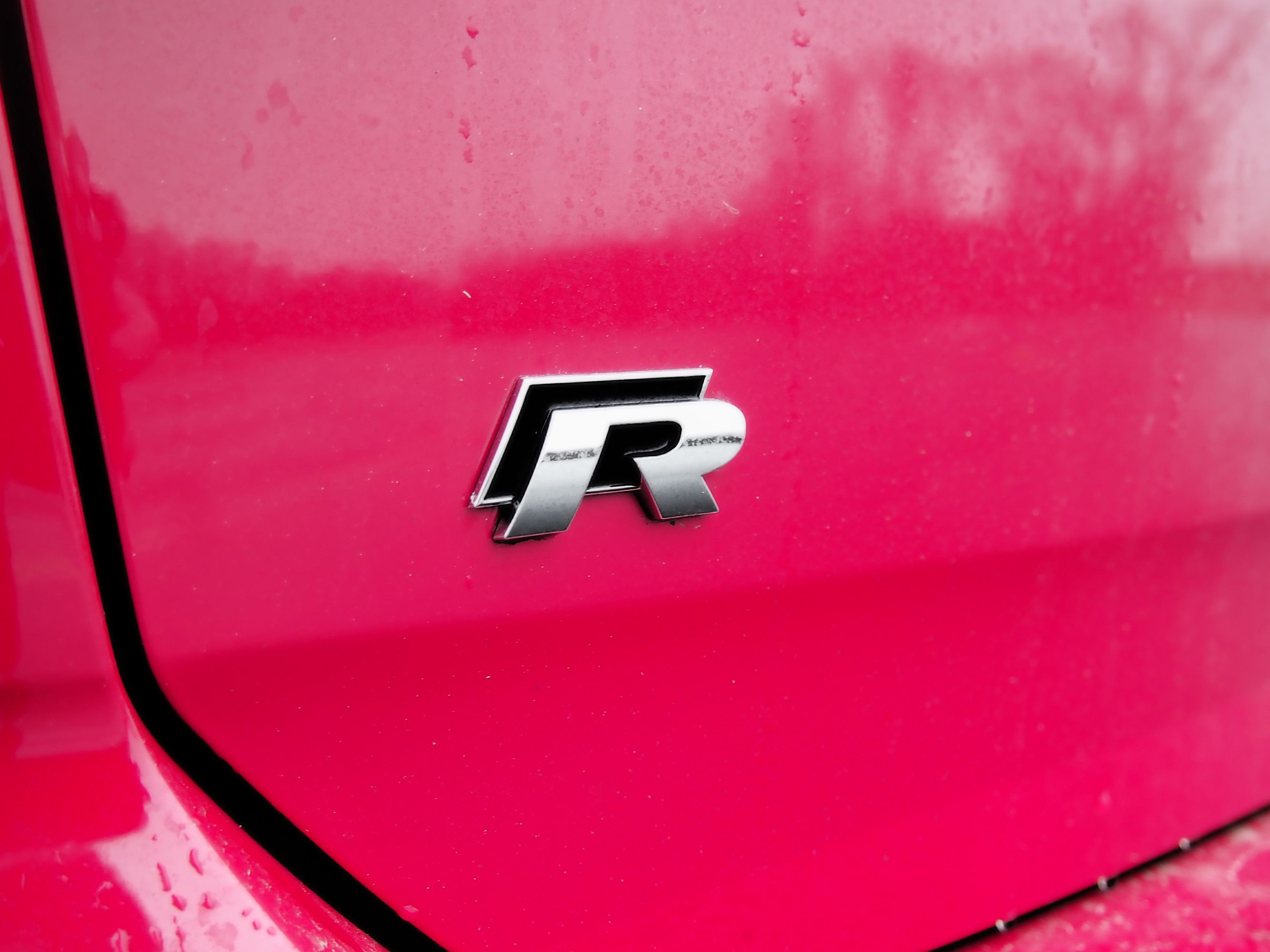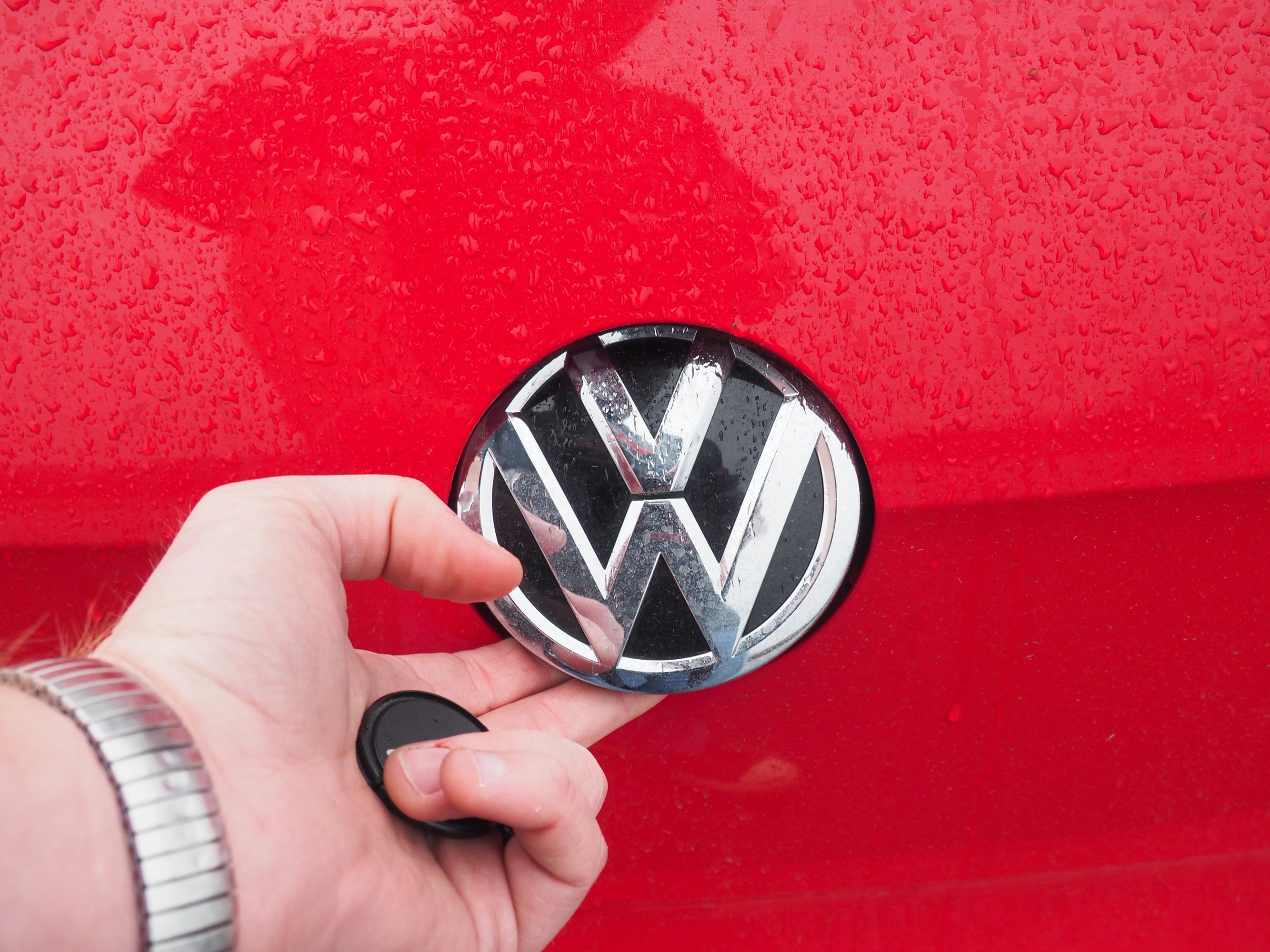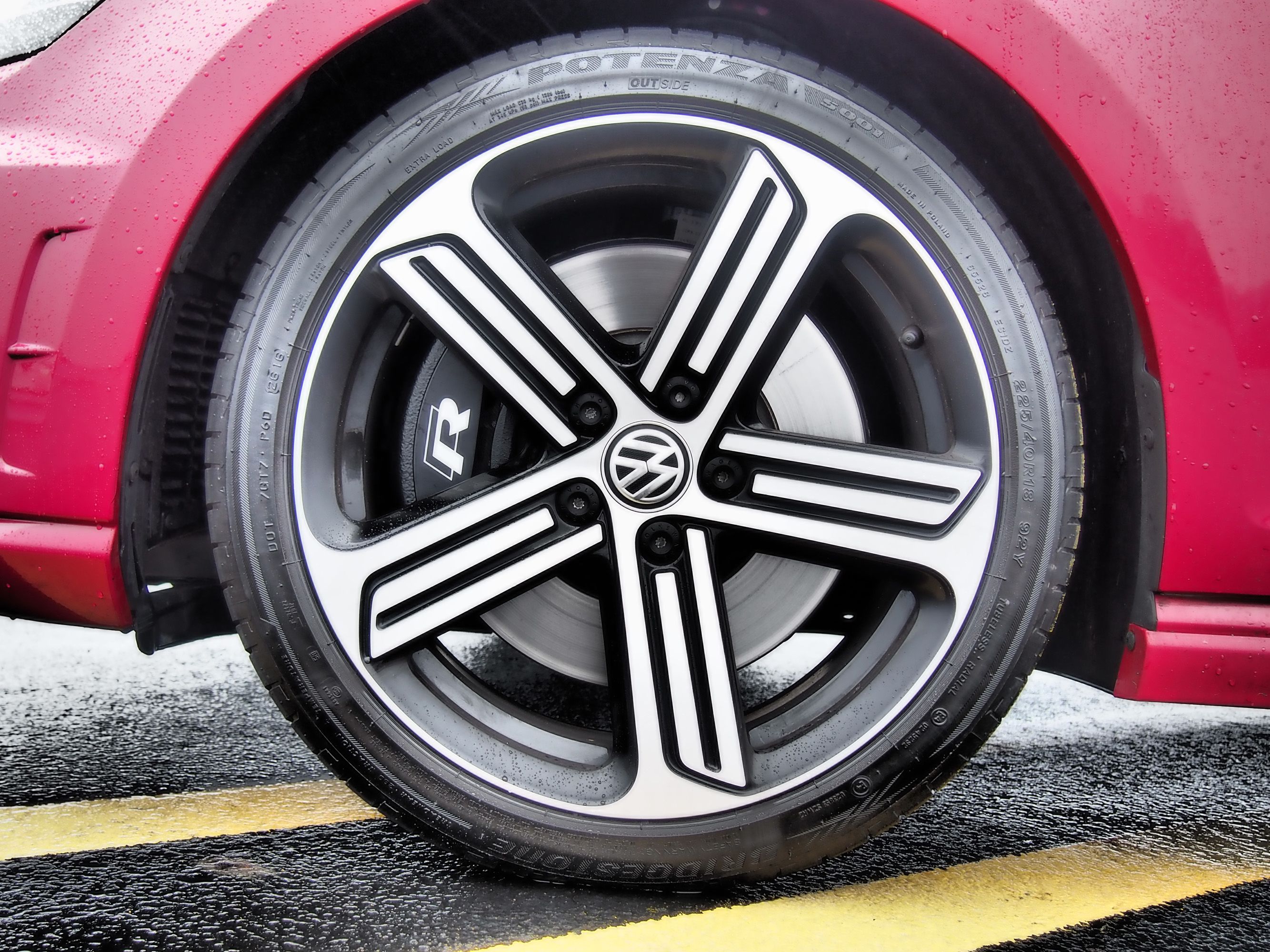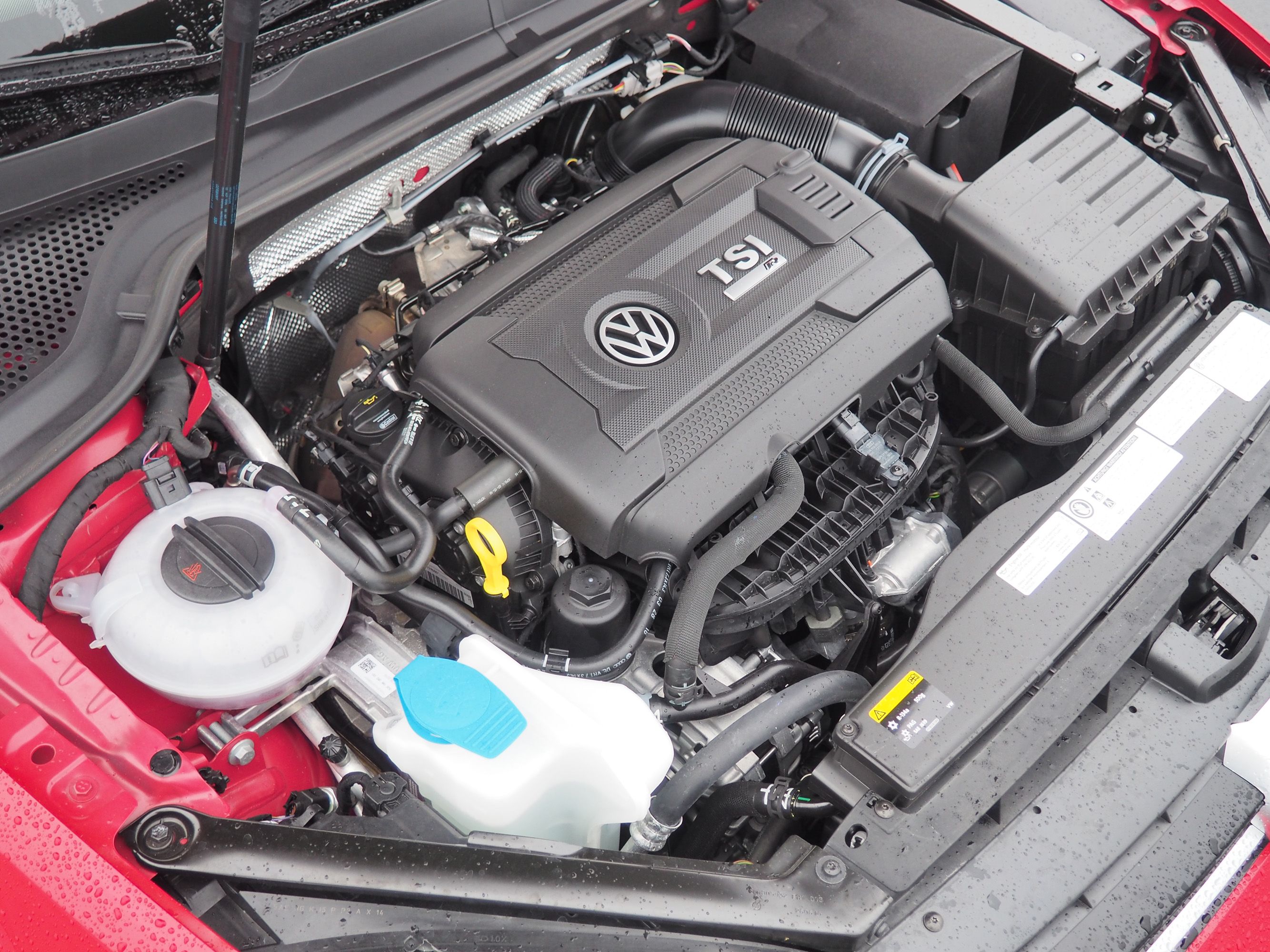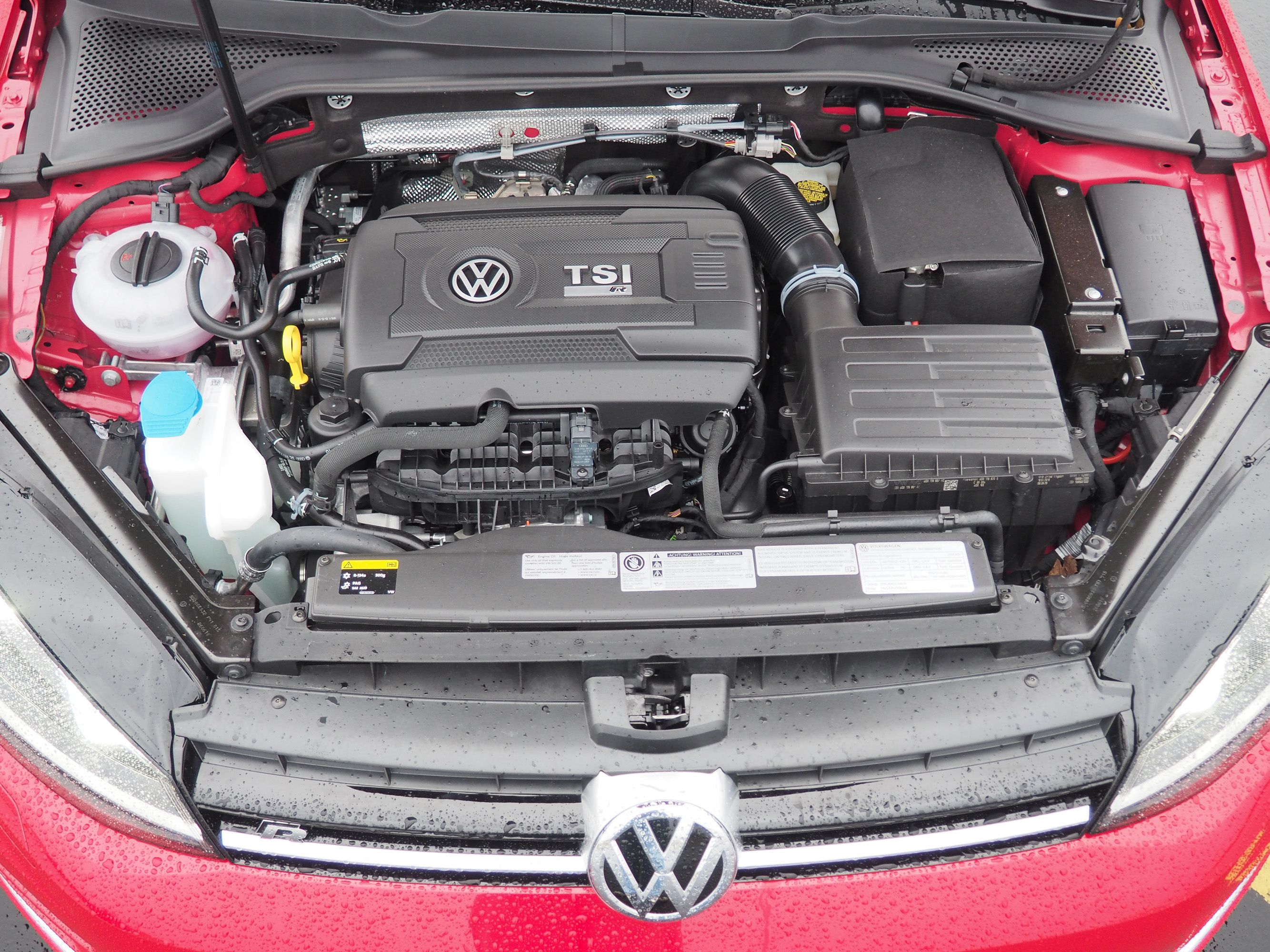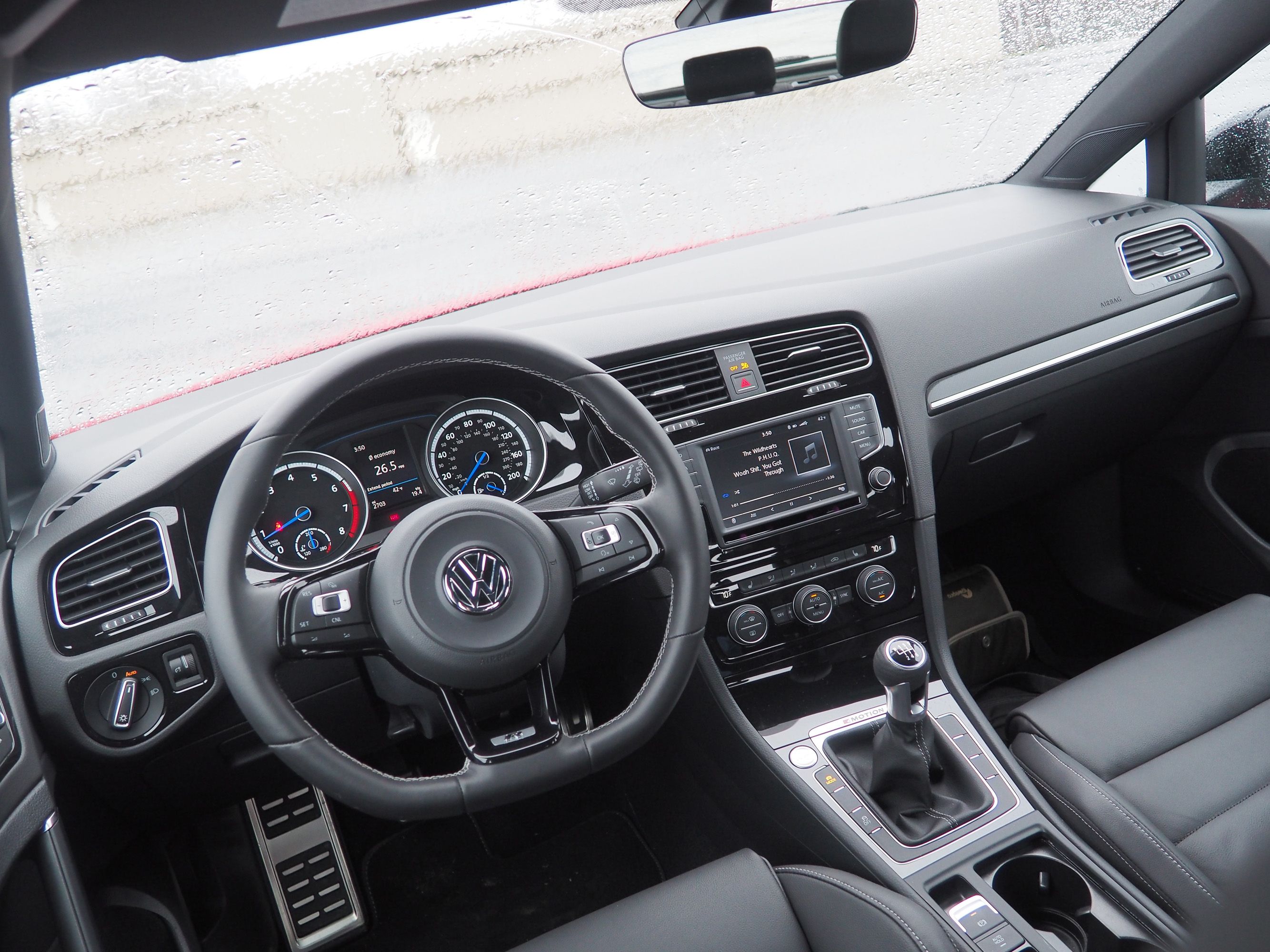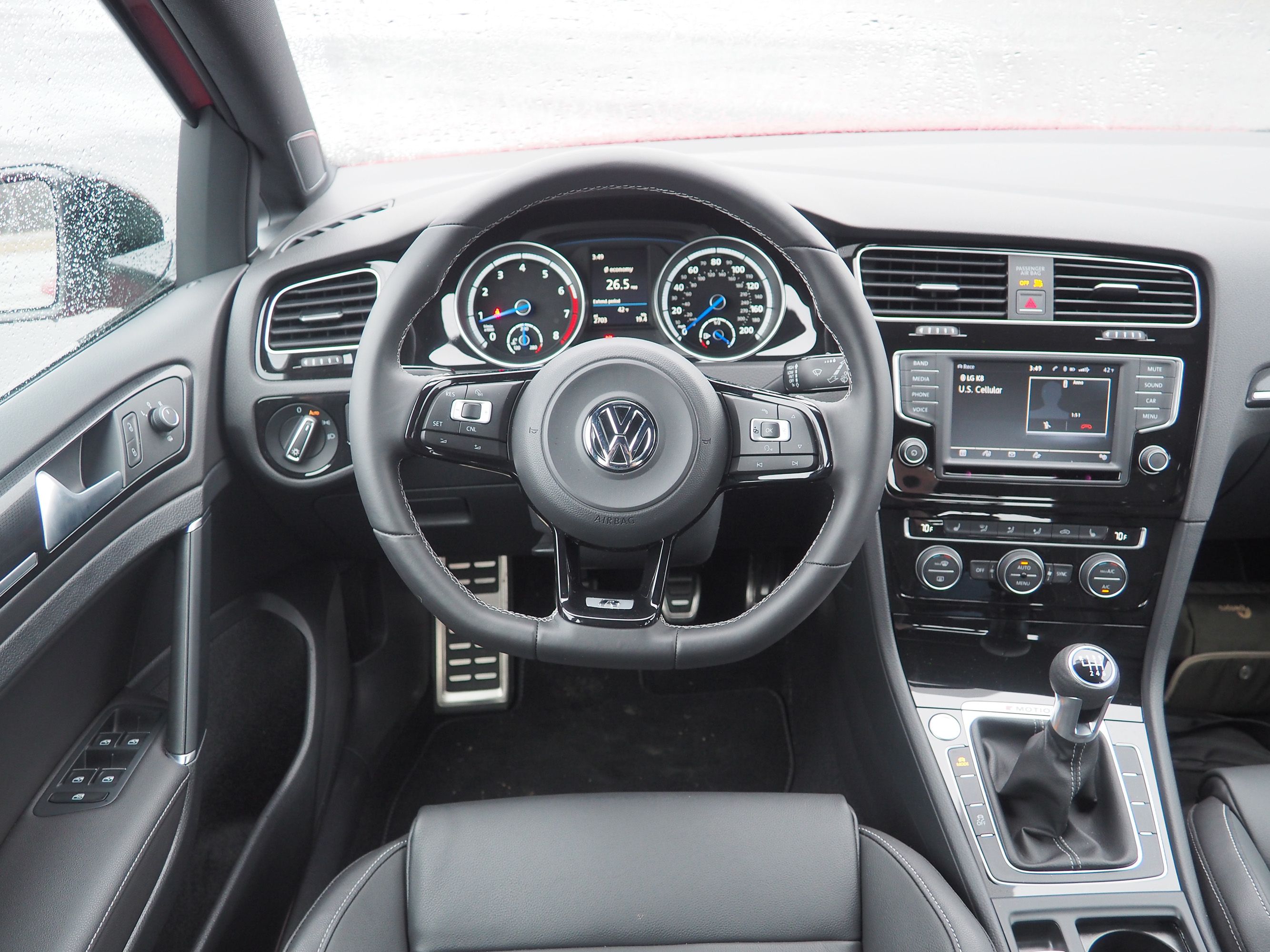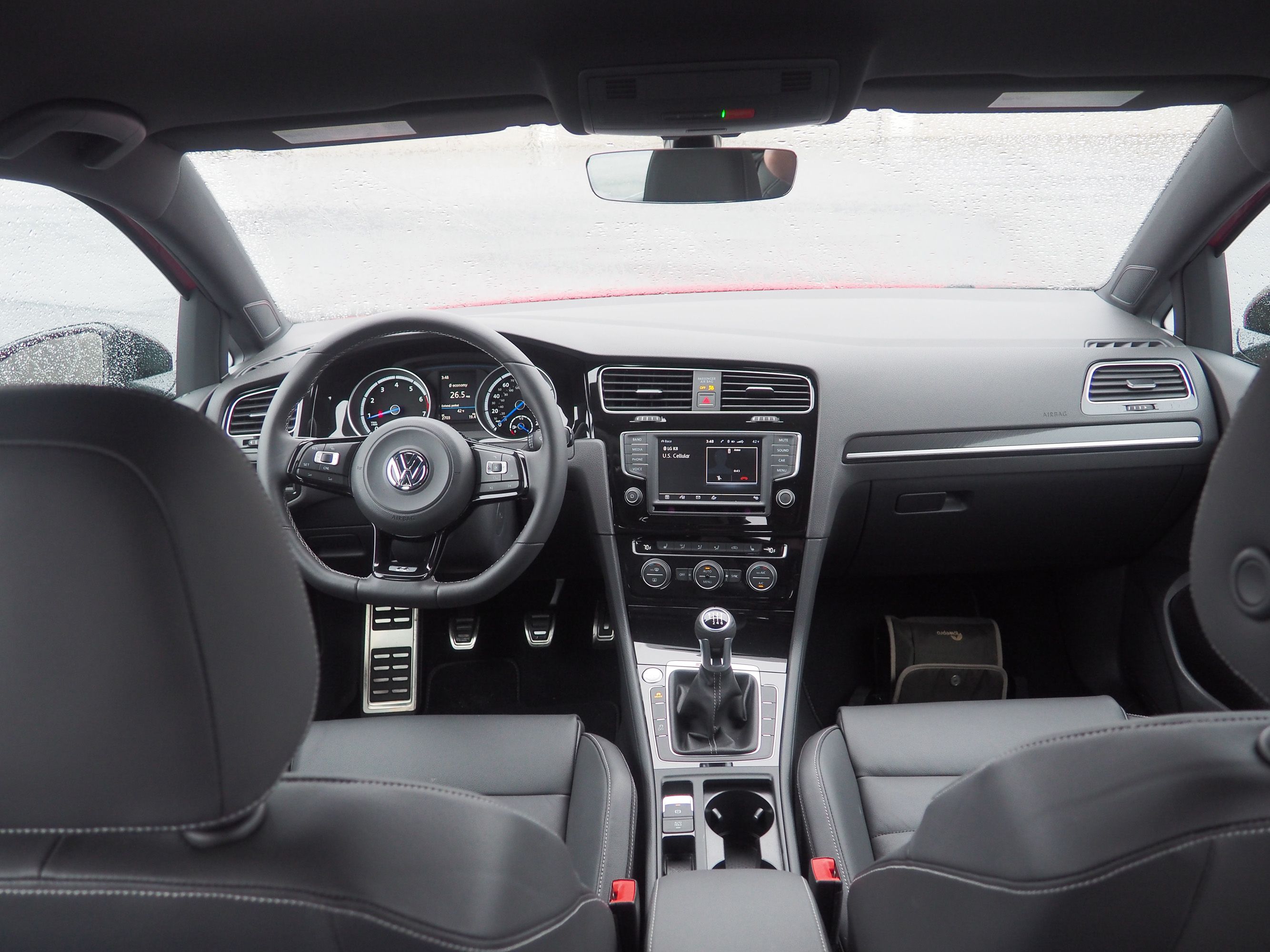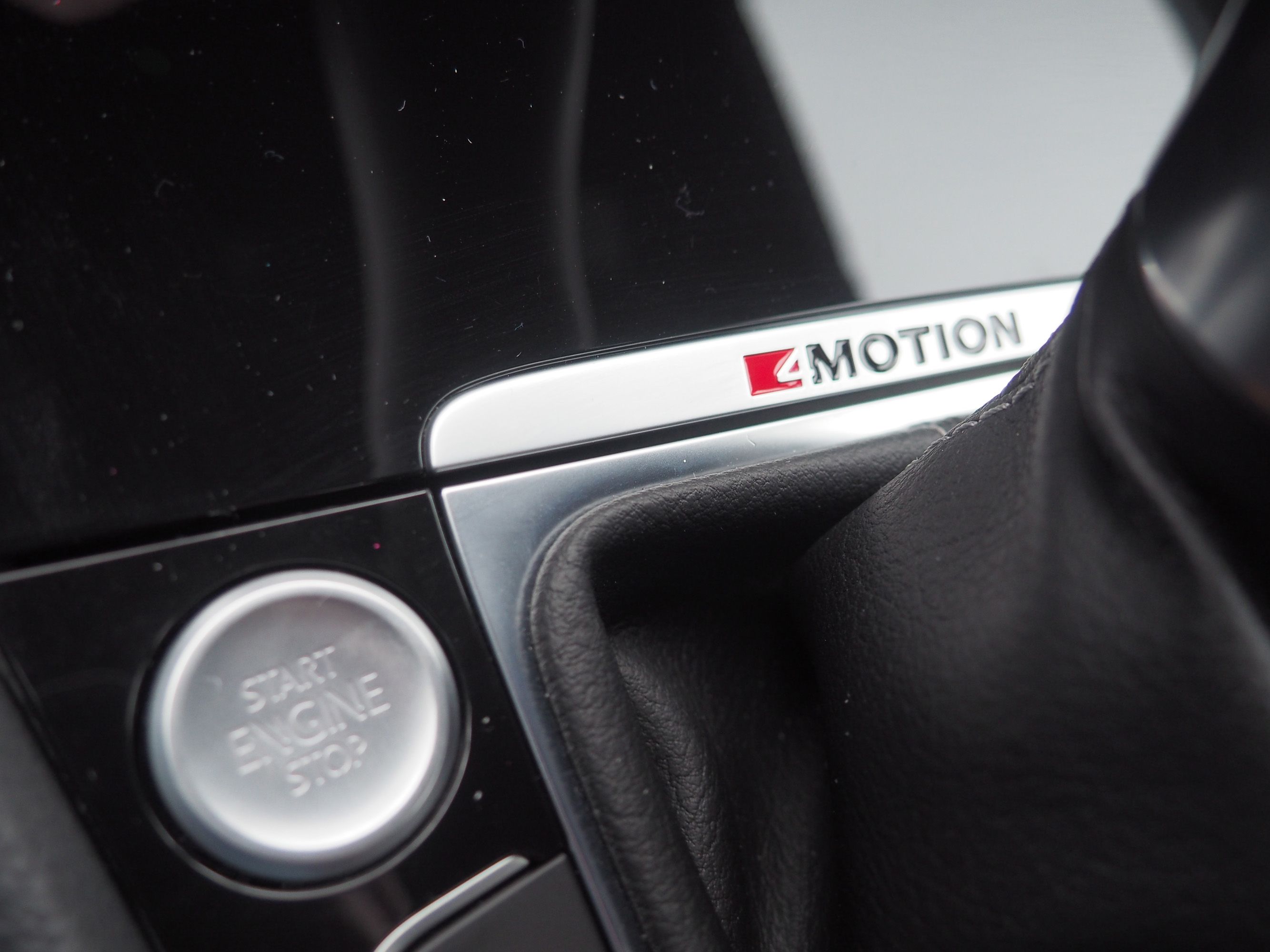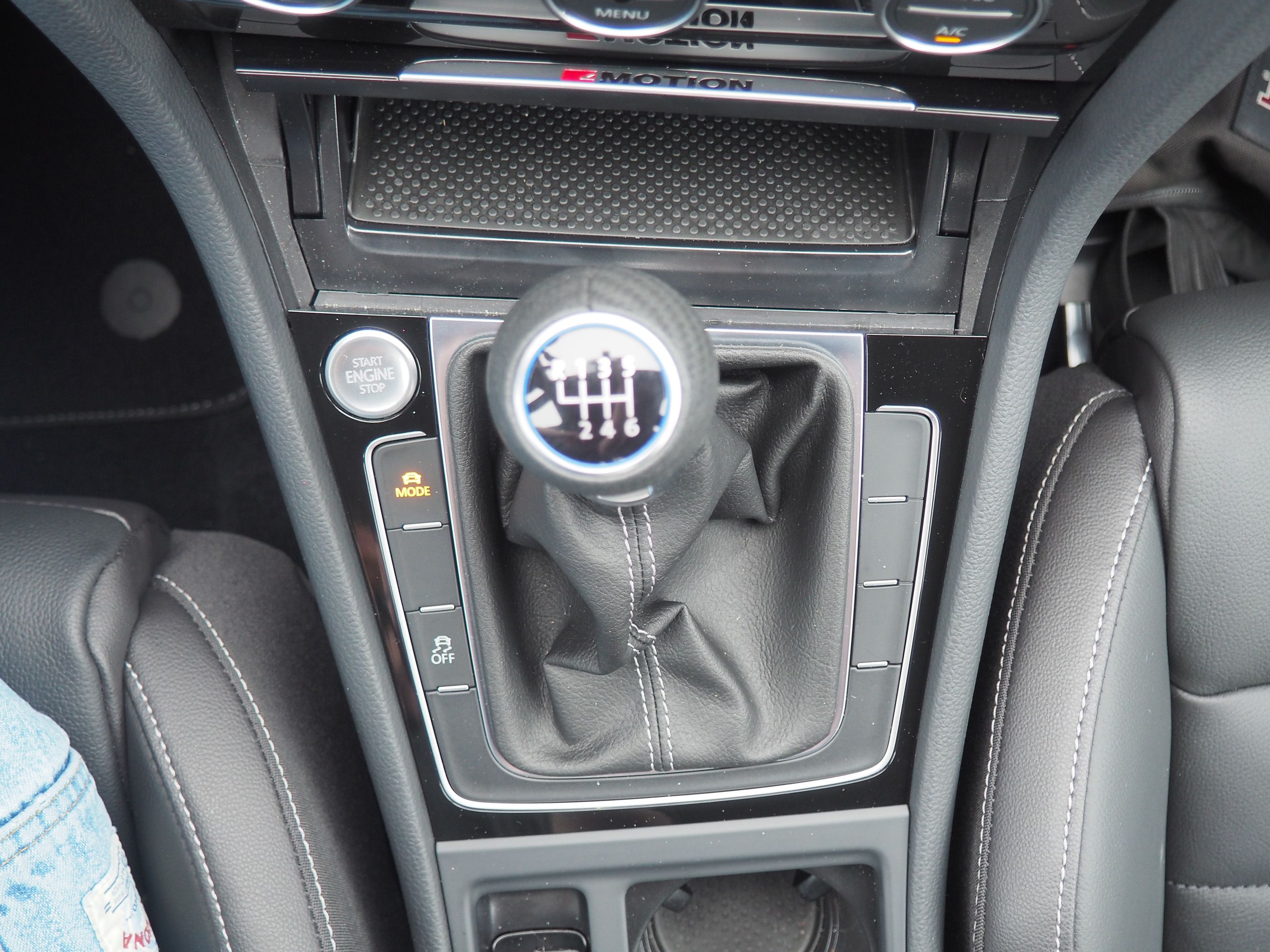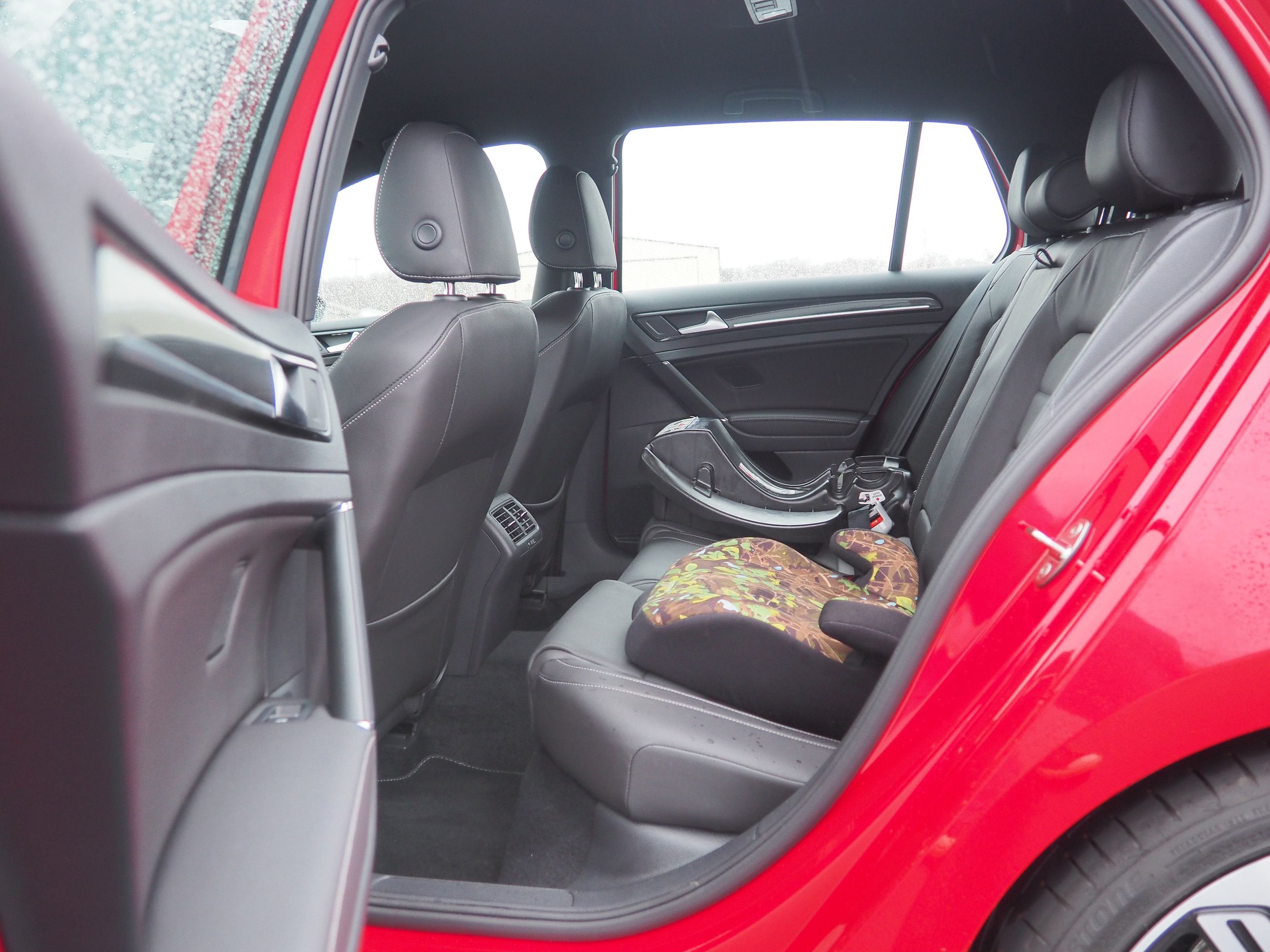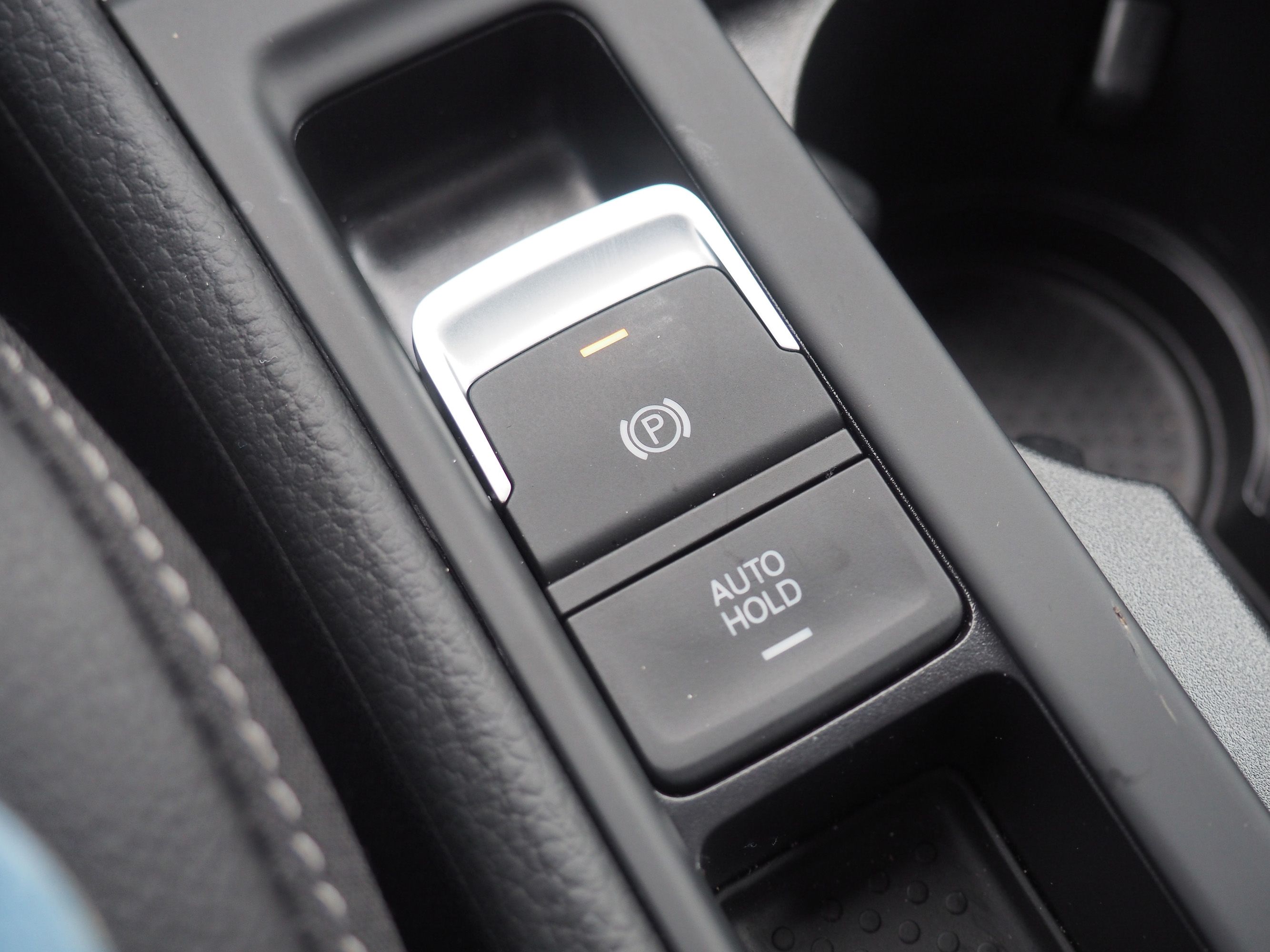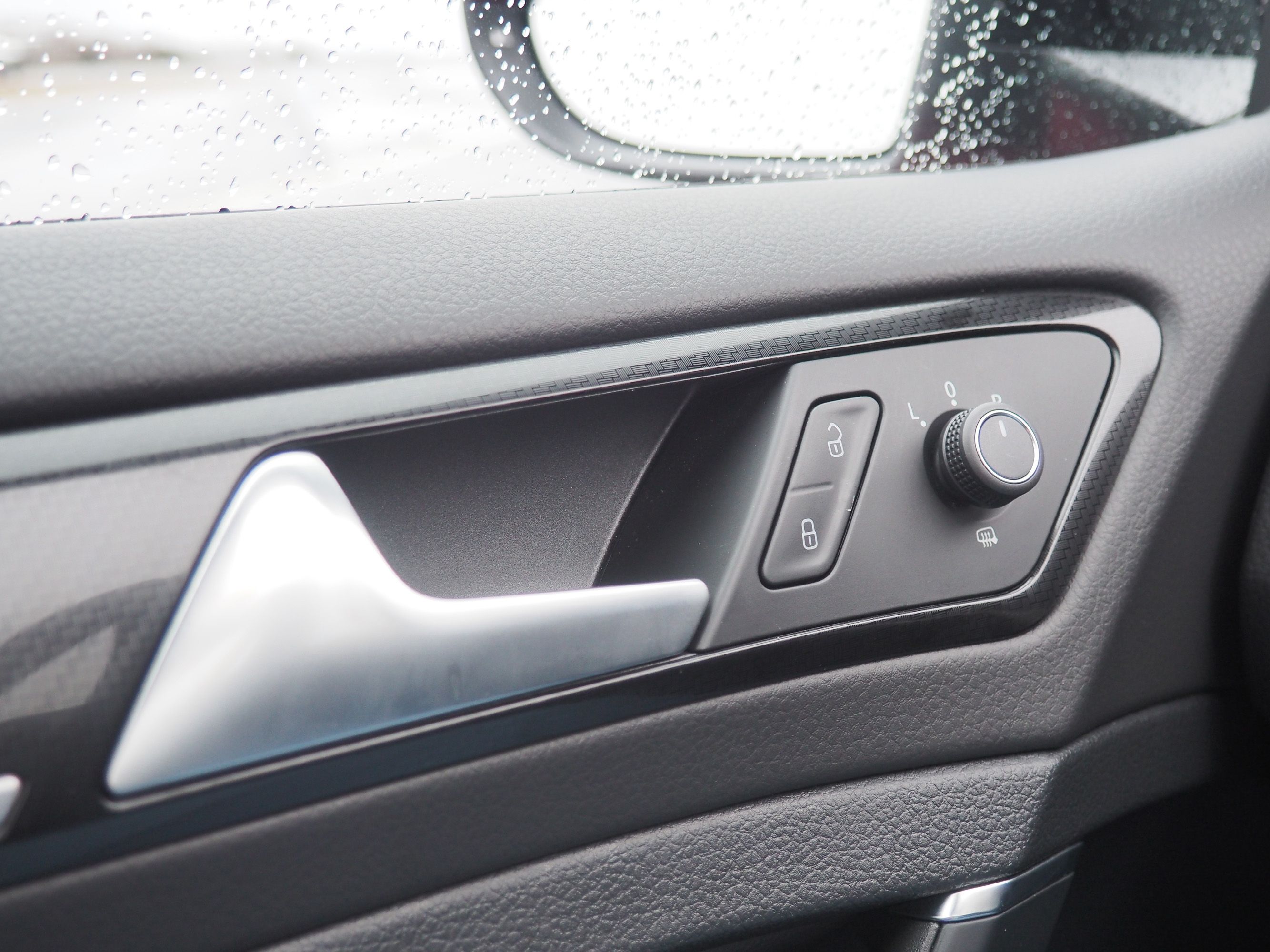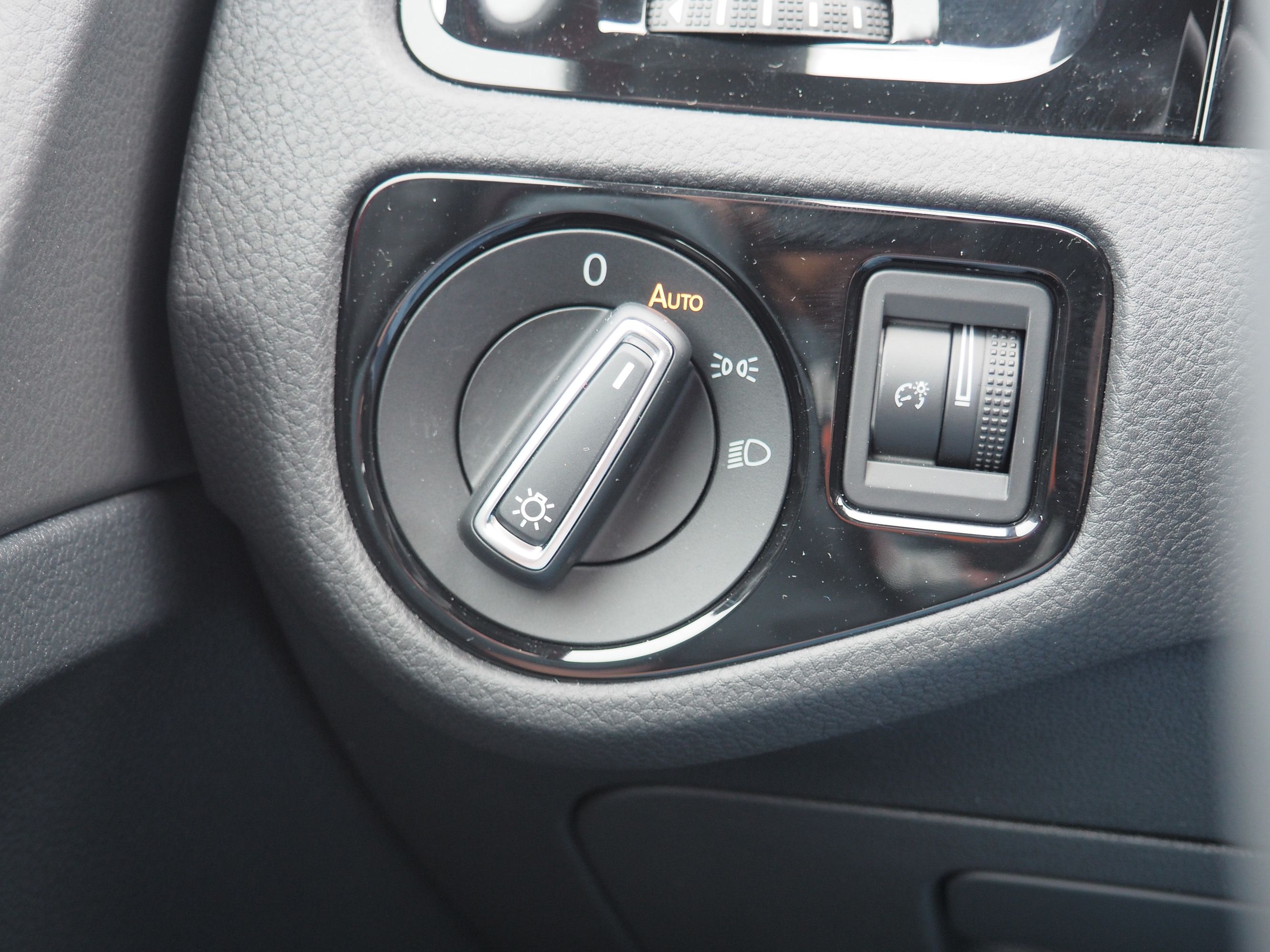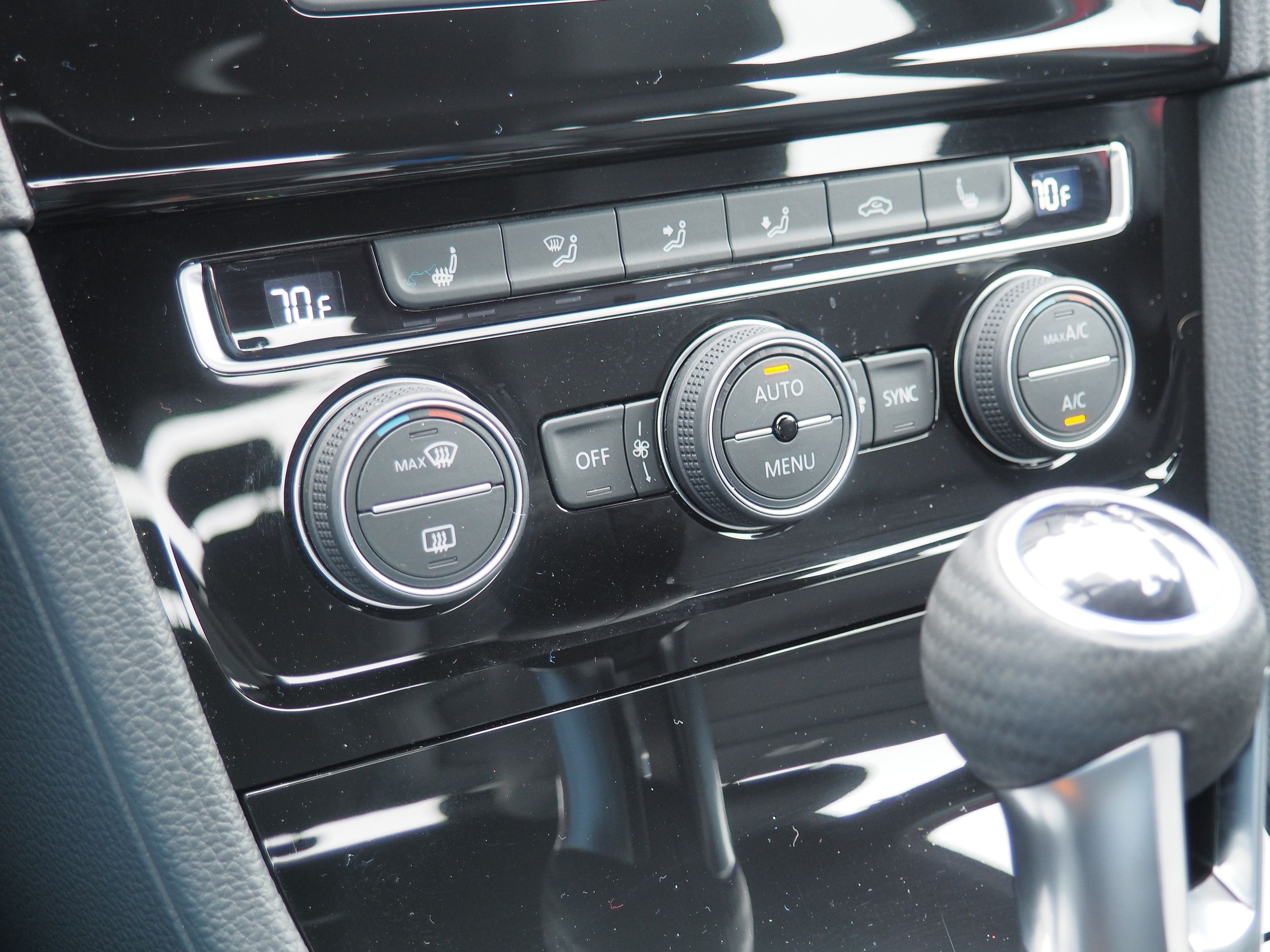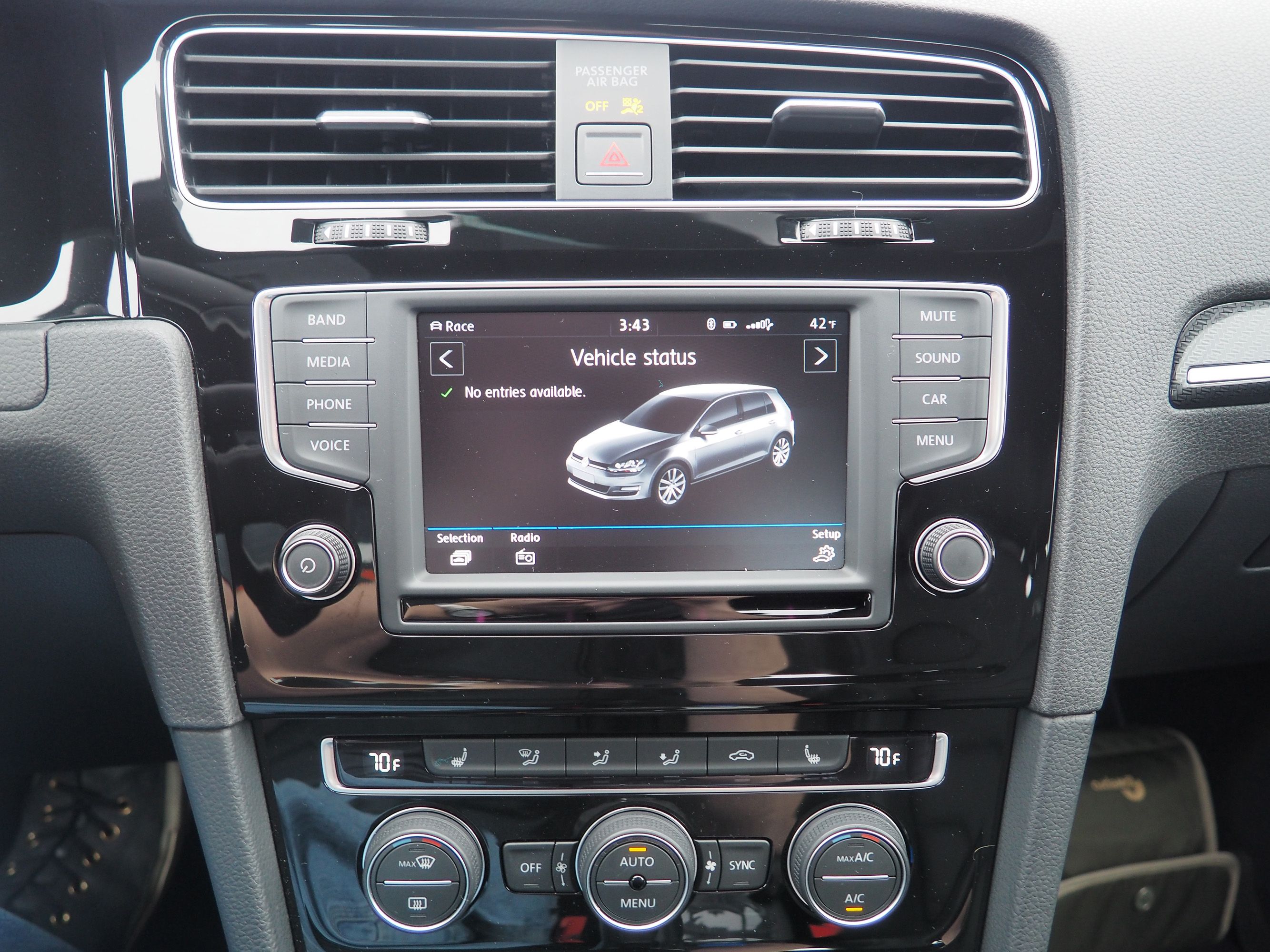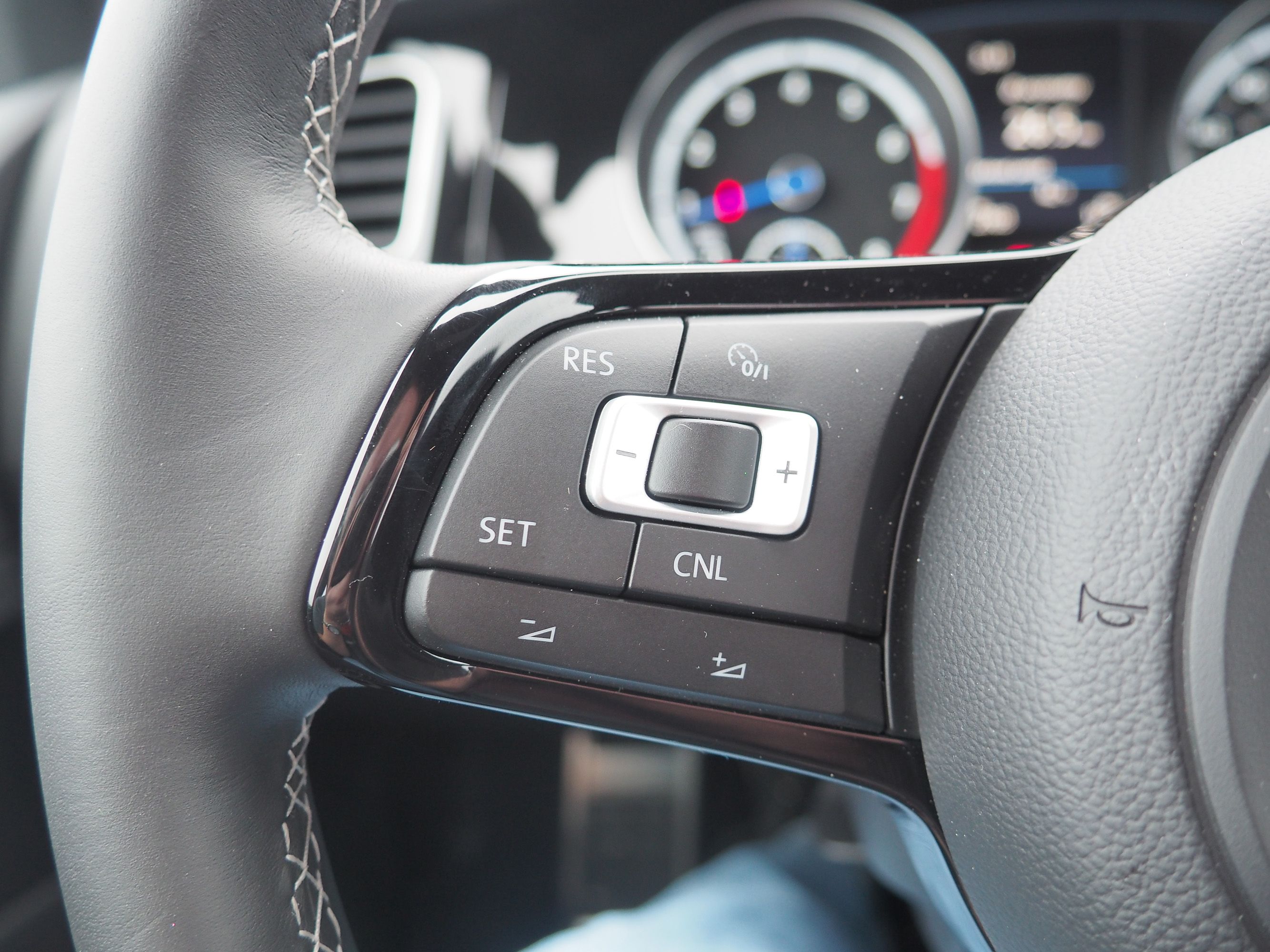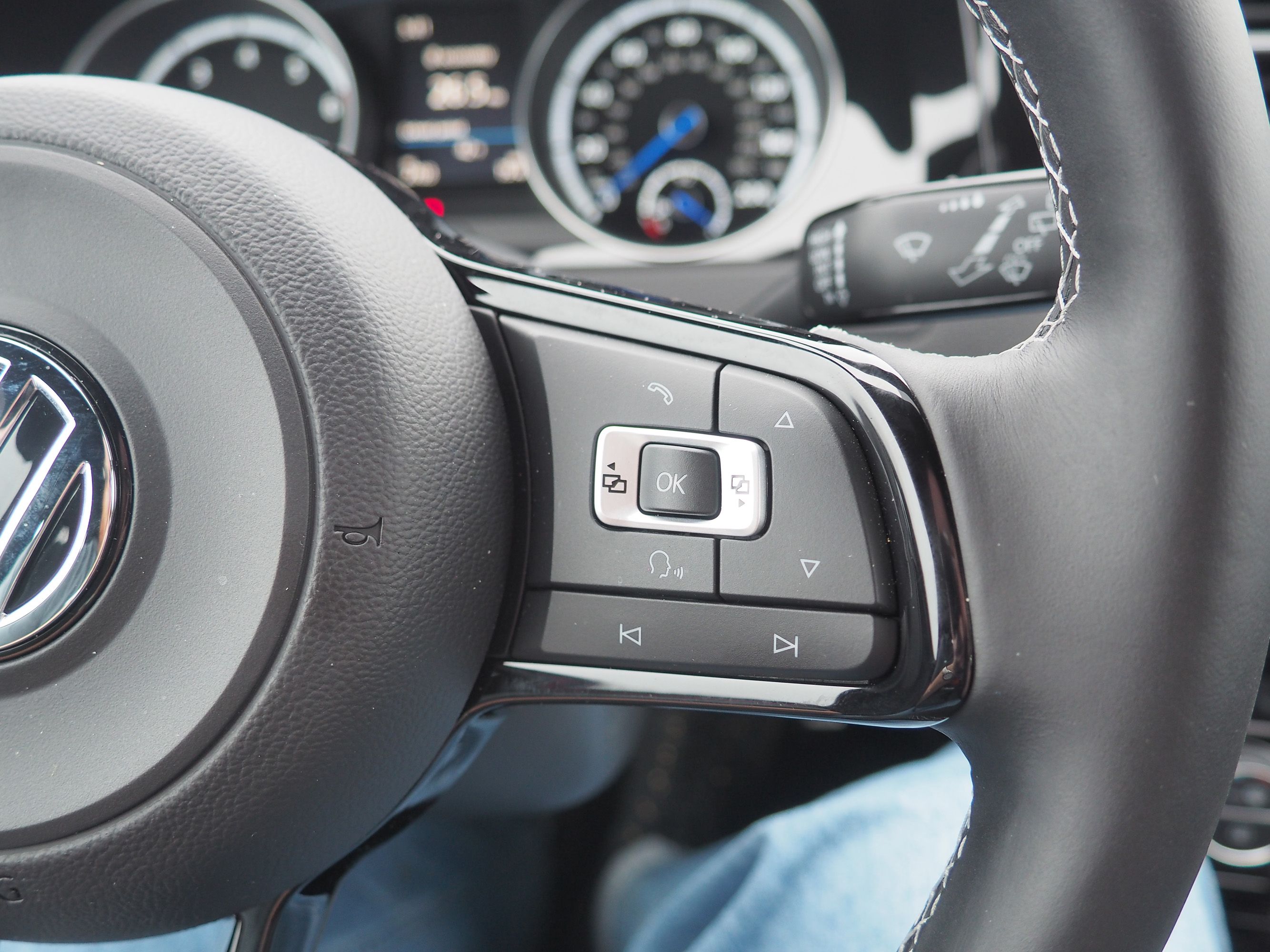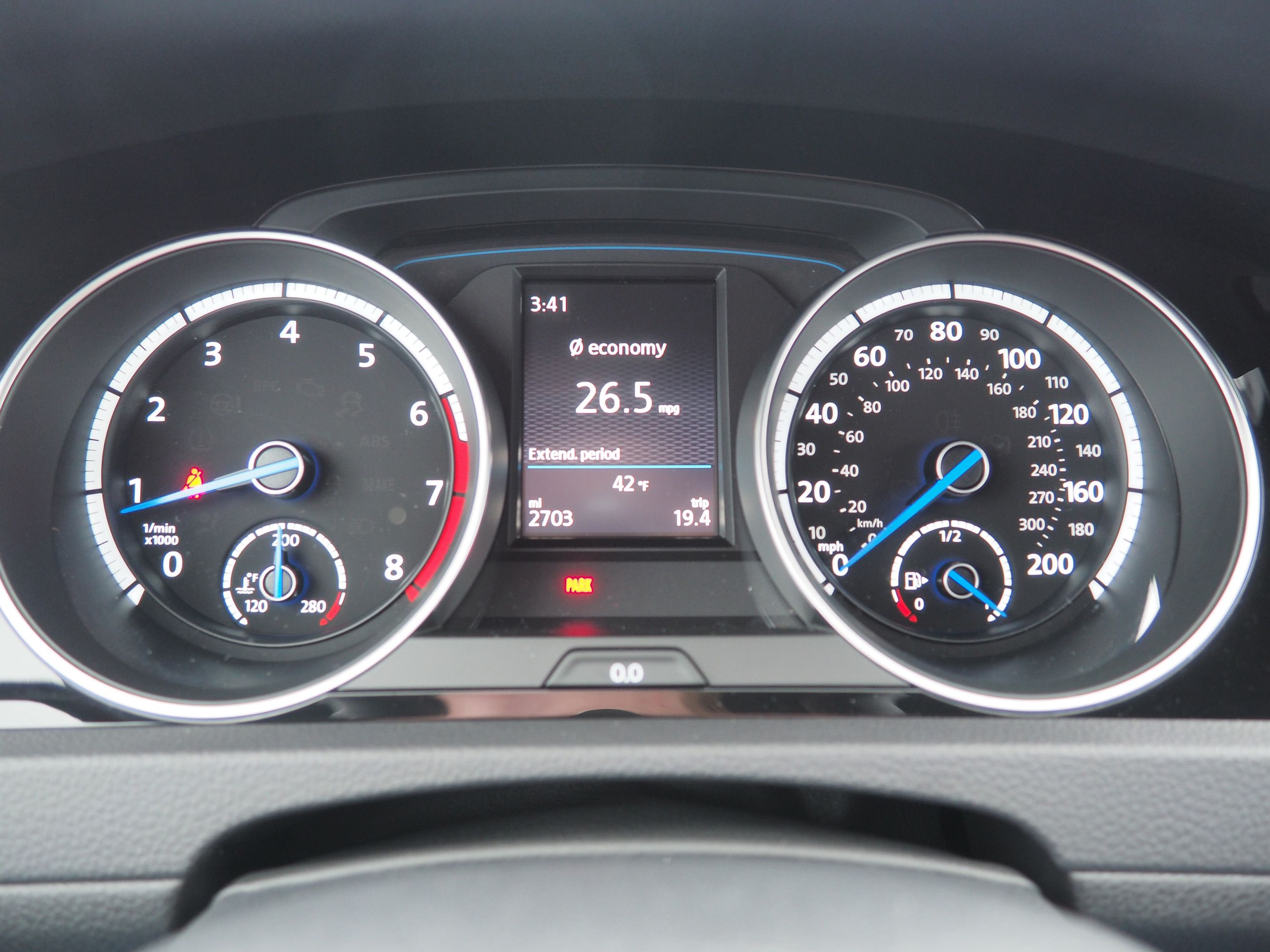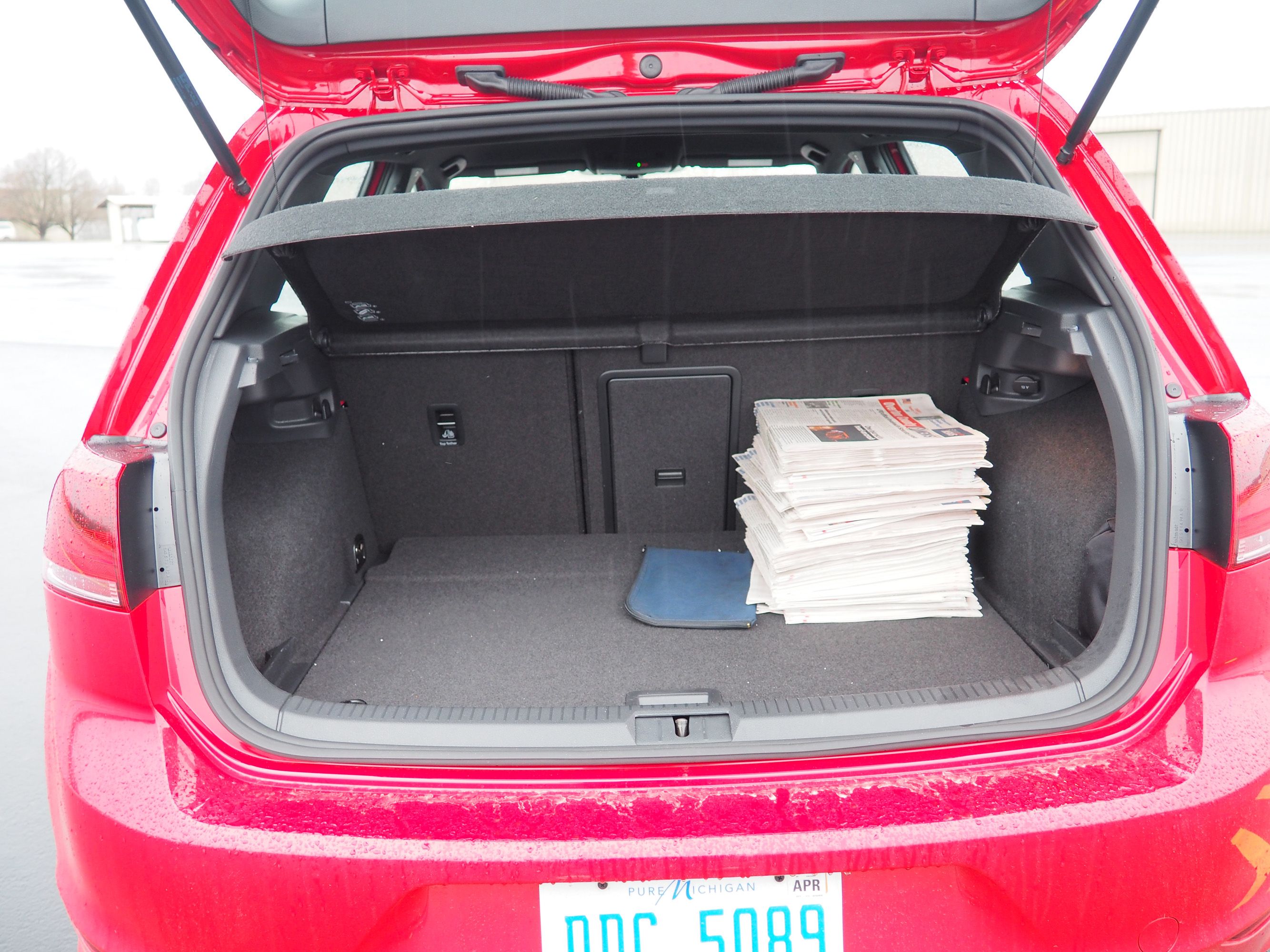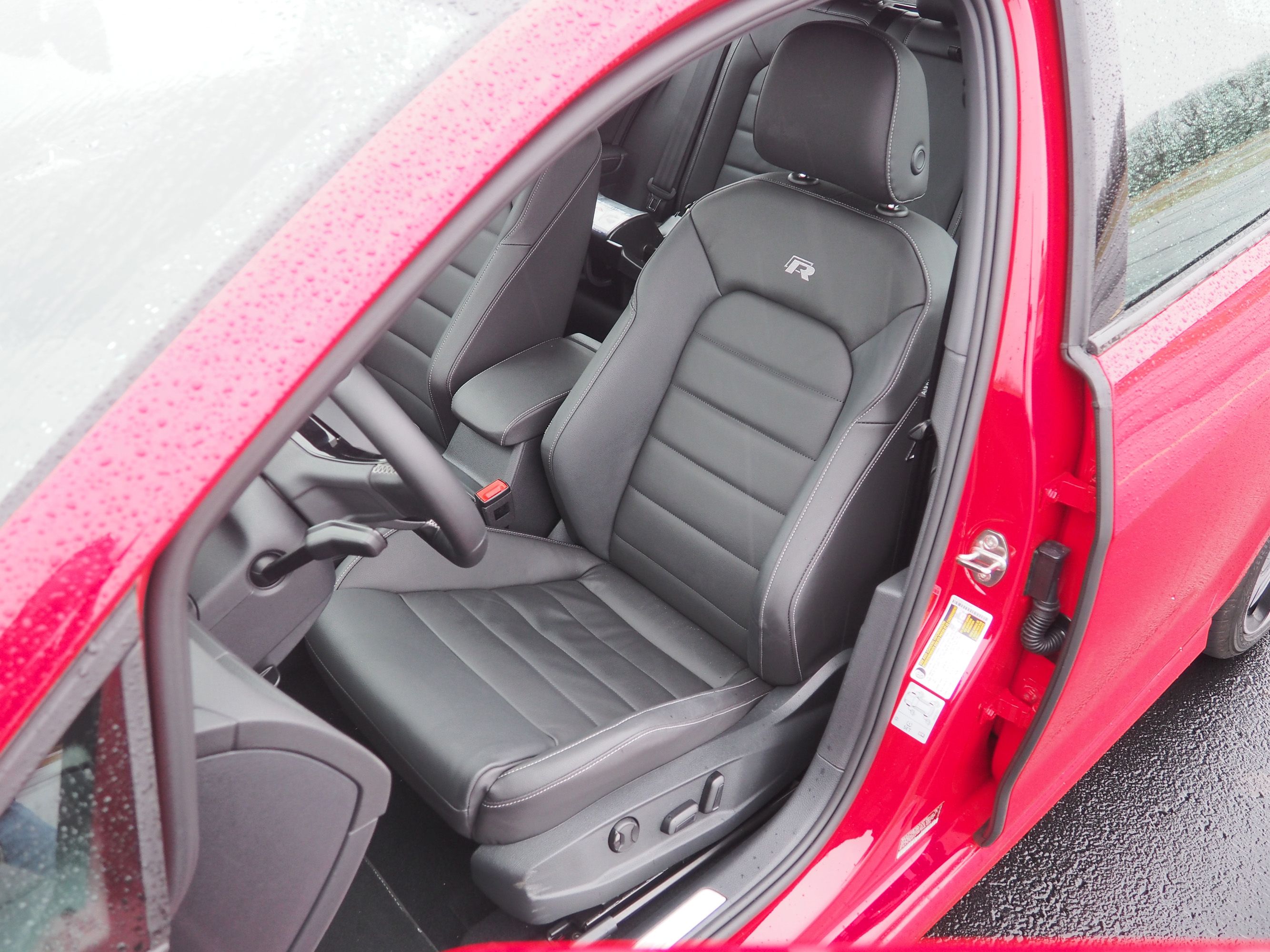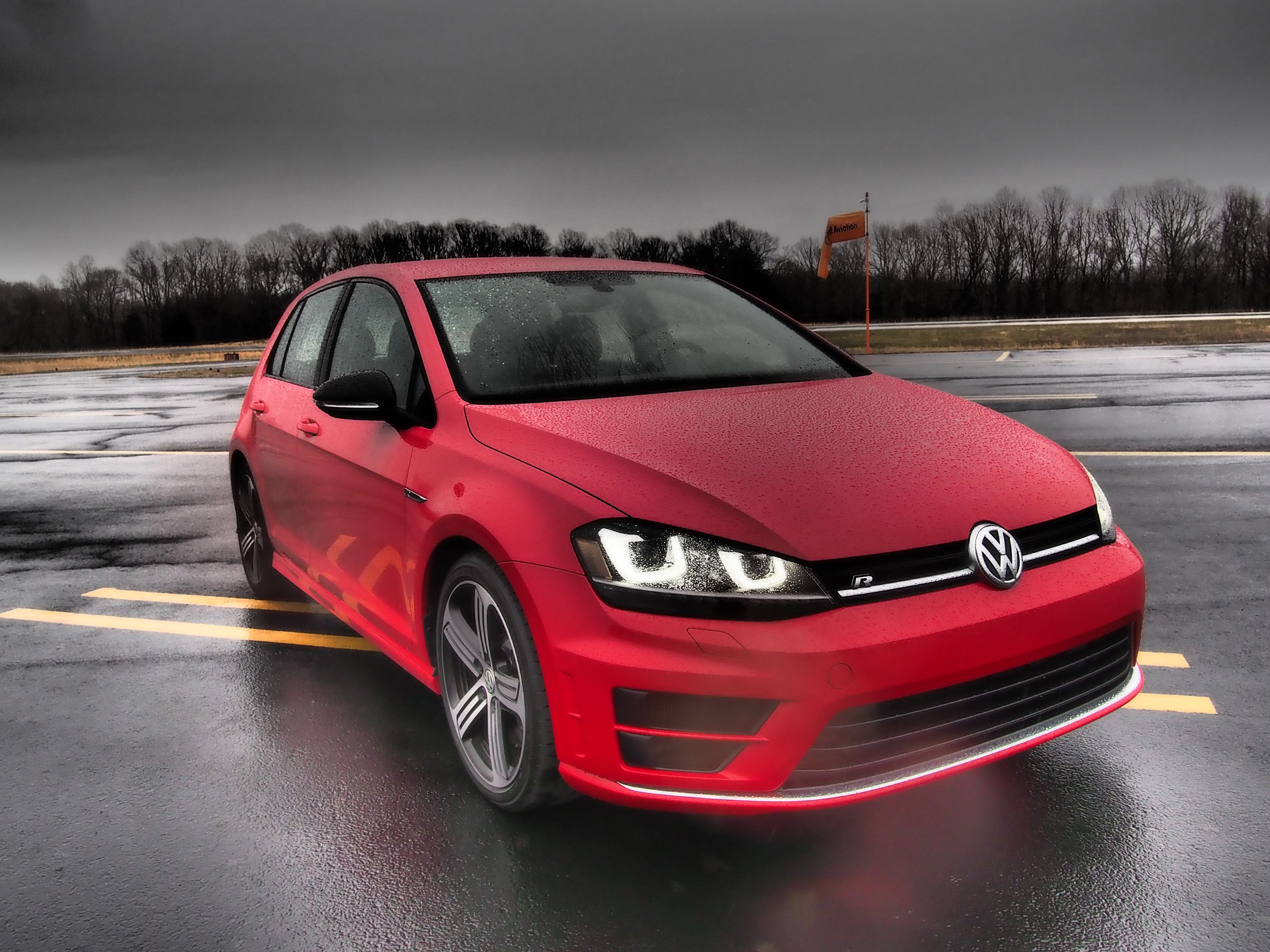The Volkswagen Golf R is not the paper champion of the hot-hatch segment. Others in the field might make more horsepower or put down a faster quarter-mile drag time. That could lead some bench-racers to opine that VW needs to ante up and “fix” the Golf R by adding power or decreasing weight. But those armchair critics miss the point of the Volkswagen Golf R. It’s a solid-feeling, rip-roaring hot-hatch, sure. But it’s also easy to live with on a daily commute -- something others in this class may not excel at.
Continue reading to learn more about the 2017 Volkswagen Golf R.
2017 Volkswagen Golf R - Driven
- Make: Array
- Model: 2017 Volkswagen Golf R - Driven
- Engine/Motor: inline-4
- Horsepower: 292 @ 5400
- Torque: 280 @ 1800
- [do not use] Vehicle Model: Array
Exterior
The 2017 Volkswagen Golf R continues the Golf R’s tradition of understatement in exterior design. It’s not shouting “LOOK AT ME I’M A FAST ONE” to cops and boy-racers. At first glance, it looks like most Golfs: two-box design, modest alloy wheels, no extraneous spoilers or ground effects.
A closer inspection will reveal the 2017 Volkswagen Golf R’s telltale styling cues. There’s a discrete lip along the lower side sills. There are scallops in the front bumper cover just ahead of the front wheels. The suspension rides just a bit lower, and the wheels are five-spoke designs specific to the R, but we’re not talking 20 inches of shiny wheel and rubber-band tires here -- you have to look closely to notice the difference from an upper-trim Golf SEL’s alloys. There is, of course, a small “R” badge both in the front grille and on the rear hatch. Easiest to spot are the four round exhaust tips peeking out from under the rear bumper.
But to most casual observers, this looks like a VW Golf that may have been lightly massaged with an extra-cost exhaust and a factory “sporty appearance package,” as so many otherwise boring commuter cars are specced nowadays.
Interior
The VW Golf R has one of the best interior space utilizations in the segment. It boasts 41.2 inches of legroom for front occupants and 35.6 for rear passengers. There’s quite a bit of shoulder room -- 55.9 inches front, 53.9 inches rear -- and more than 38 inches of headroom. There’s 22.8 cubic feet of cargo space behind the rear seats, and if you fold those down, you get a fairly massive 52.7 cubic feet to haul whatever your heart desires.
The Golf R has leather seating surfaces much like a top-line Golf SEL trim, but the R gets “R” logos embroidered in the front buckets. The front seats are all-day comfortable for six-footers and are heated. The rear bench sits a little low to the floor for taller passengers, but for those of average height or for young passengers, they’ll be comfortable for road trips.
Driver positioning is top-notch. A tilting, telescoping steering wheel has a moderate range of motion, and there’s a positively enormous dead pedal for the driver’s left foot. Pedal spacing is good for most feet, even large sizes.
The test car had a six-speed manual transmission, and its shift lever fell readily at-hand and felt somewhat heavy, but precise. The clutch pedal has a strange sensation of numbness at first, seeming almost to come up too slowly upon release. After a day or two, you get used to it and wonder why you thought it was so weird. Still, a lighter, more natural-feeling clutch pedal rebound would be welcome.
The Golf R features VW’s latest infotainment system with a 6.5-inch touchscreen and VW’s App-Connect system, which includes Android Auto and Apple CarPlay integration that mirrors a smartphone’s apps in a driving-friendly environment. A proximity sensor brings up additional on-screen options whenever a hand gets close to the screen, which is a pretty neat trick.
Overall, the interior carries over the simple, purposeful tone set by the exterior. It’s a little sporty, but mostly, it’s just good, functional design.
The Drive
The 2017 Volkswagen Golf R has 4Motion all-wheel drive, and thanks to some masterful tuning from VW engineers, it sticks to the road like glue.
Throw it into a curve and mat the throttle, and the Golf R just sticks. No oversteer drama, no understeer plowing straight ahead while the steering wheel is turned. It just finds the wheels with the most grip and directs traction to them. In the curves, the Golf R shines.
It’s no slouch on the straightaway, either. WIth a 2.0-liter four-cylinder turbocharged gasoline engine making 292 horsepower at 5,400 RPM and 280 lb-ft of torque at a low 1,800 RPM. The turbo spools up early and hits hard, carrying the Golf R to 60 MPH from a standstill in less than five seconds.
The steering is rack-and-pinion and has electric power assist, which is thankfully not overboosted like some electric power steering setups. There’s a nice heft to the steering effort.
Most notable about the Golf R is, unlike some hot-hatch contenders, it’s actually nice to live with on a daily basis. There’s very little in the way of compromise being made here. The suspension is slightly lower and firmer than a standard Golf, and there are lower-profile performance tires on the R, so you feel expansion joints and potholes a little more vividly. And there is the aforementioned heavy clutch feeling, which one suspects might not be present on the less-powerful manual-transmission Golf models.
But on the whole, a Golf R is a perfectly serviceable commuter car that also happens to be capable of laying down impressive laps at the weekend autocross or track day, with a competent driver. It’s not loud in the cabin at highway speed. Potholes don’t jar your teeth out. The clutch, while a bit heavy-feeling at first, doesn’t cramp your calf. The brakes aren’t so touchy that you give passengers whiplash every time you stop the car.
The competition
Ford Focus RS
A lot of hoopla has been made in the press about the Ford Focus RS. It’s probably the hottest of the hot hatches, with a stout 350 horsepower and 350 lb-ft of torque, and it has a superb all-wheel drive system that will wow racetrack competitors when the going gets curvy.
But its performance credentials come at the price of commuting civility, with many long-term reviews noting how the Focus RS has harsh suspension and engine tuning that make it less-than-pleasant to drive on a daily basis, and its interior is not quite as nice -- and certainly not as timeless or functional in terms of its design. As a pure track car, the all-wheel drive Focus RS will outrun a Golf R -- albeit barely, if some magazine reviews are to be believed. But as a daily driver, a Focus RS may very well be traded for a Golf R inside of two years.
Read our driven review on the Ford Focus RS.
Subaru WRX STi
While not a hatchback, the Subaru WRX STi makes the same argument as any hot hatch: Reasonably practical, this is a fun car that can schlep the kids to school before dicing it up on the long way to the office.
Where the Scoob is let down is in its refinement. Its suspension dampening isn’t as well done as the Golf R’s, and neither is its powertrain. The “boxer” four-cylinder engine has character and is slightly more powerful than the Golf R at 305 horsepower and 290 lb-ft of torque, but it is rough around the edges, and its turbo has more lag than the Golf R’s. Finally, the WRX STi is nowhere near as handsome nor as understated as the Golf R, with its huge rear wing and pronounced aero kit announcing to the world that you’re driving Subaru’s hottest compact sedan.
Read our driven review on the Subaru WRX STi.
Honda Civic Type R
Honda finally brought out a new Civic Type R to compete in this segment in 2017, and its numbers are competitive on paper: 306 horsepower and 295 lb-ft from a 2.0-liter turbocharged four that runs a whopping 23.2 lbs of boost. Unlike high-revving Hondas of the past, this one redlines at a common 7,000 RPM. Expect lighter six-speed manual transmission gear changes than the VW Golf R -- Honda has always been good at manual gearboxes.
But if you’re expecting not to get noticed, good luck. The new Honda Civic Type R is even gaudier than the Subaru WRX STi in appearance, with its enormous rear wing and functional lower-body aerodynamic enhancements calling additional attention to an already polarizing Civic design.
The Civic R’s trump card may be the base price of $33,900, undercutting the Golf R by a couple thousand bucks.
Read our full review on the Honda Civic Type R.
Conclusion
With the hot hatch segment heating up a little lately -- let’s not call it a revival just yet -- buyers are faced with some compelling choices. Any of the above competitors will provide enough go-fast to endanger your license, should you get too cocky on public roads, and any would be fun with a sticky set of tires at an autocross or track day at the weekend.
But the three Golf R competitors above come across feeling either less grown-up (Subaru WRX STi, Civic Type R) or too track-focused for a daily driver (Ford Focus RS). The Golf R is the adult’s choice. It checks a broad spectrum of boxes valued by shoppers in the segment -- things like sporty driving characteristics, a strong engine, and the availability of a manual transmission that is pleasant to row. But while it offers those things, it doesn’t make buyers compromise on things like road noise, interior practicality, or tasteful design.
Any of these cars can be optioned beyond $40,000, but the Golf has style and sensibility that make it the most likely to be admired long after the last car payment is made.
Disclosure: Volkswagen provided the vehicle, insurance, and one tank of fuel for this review.
References
Read our full review on the Volkswagen Golf R.
Read our full review on the Volkswagen Golf.

